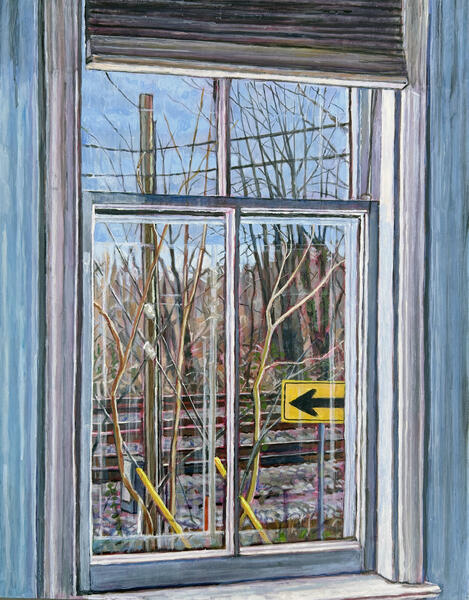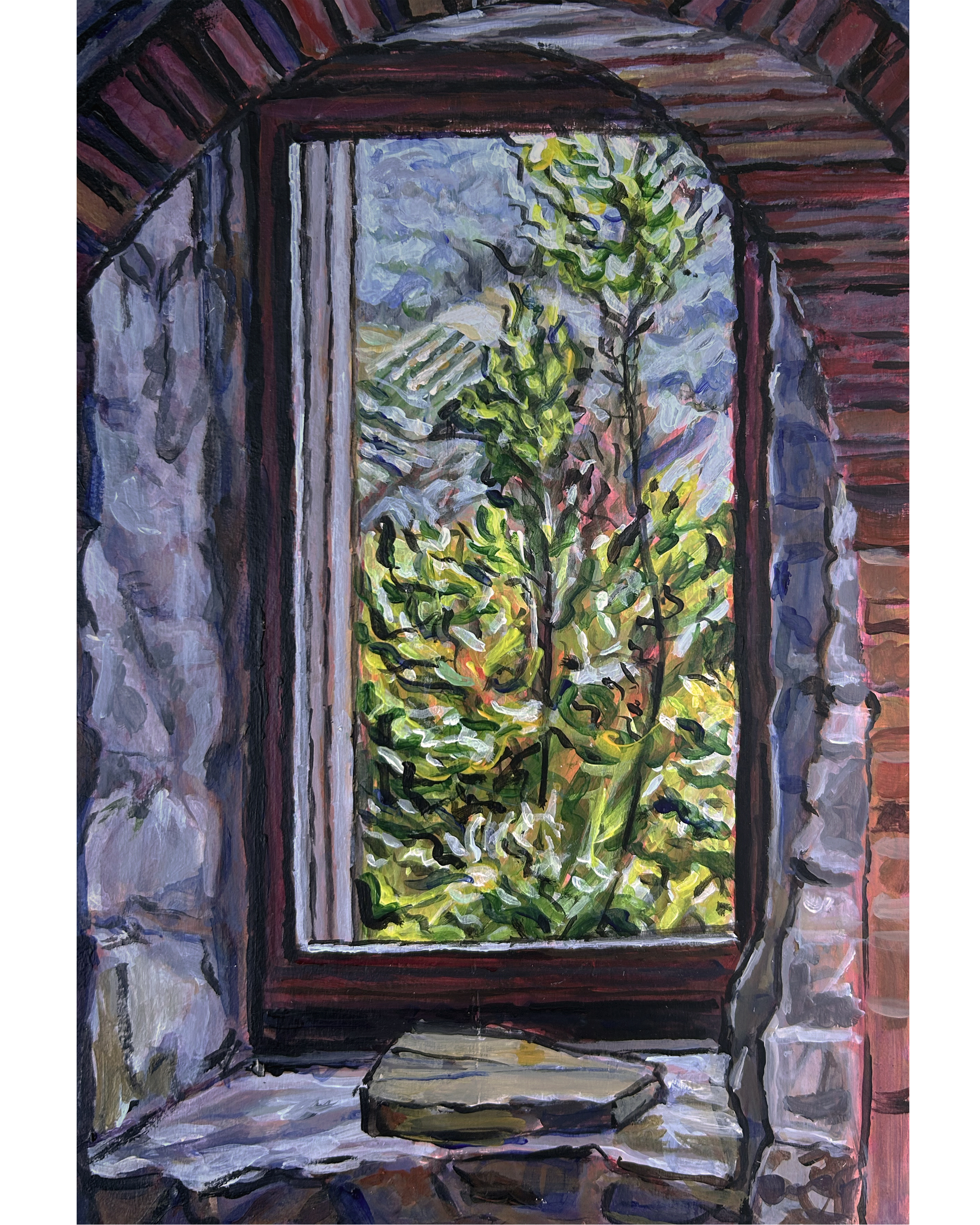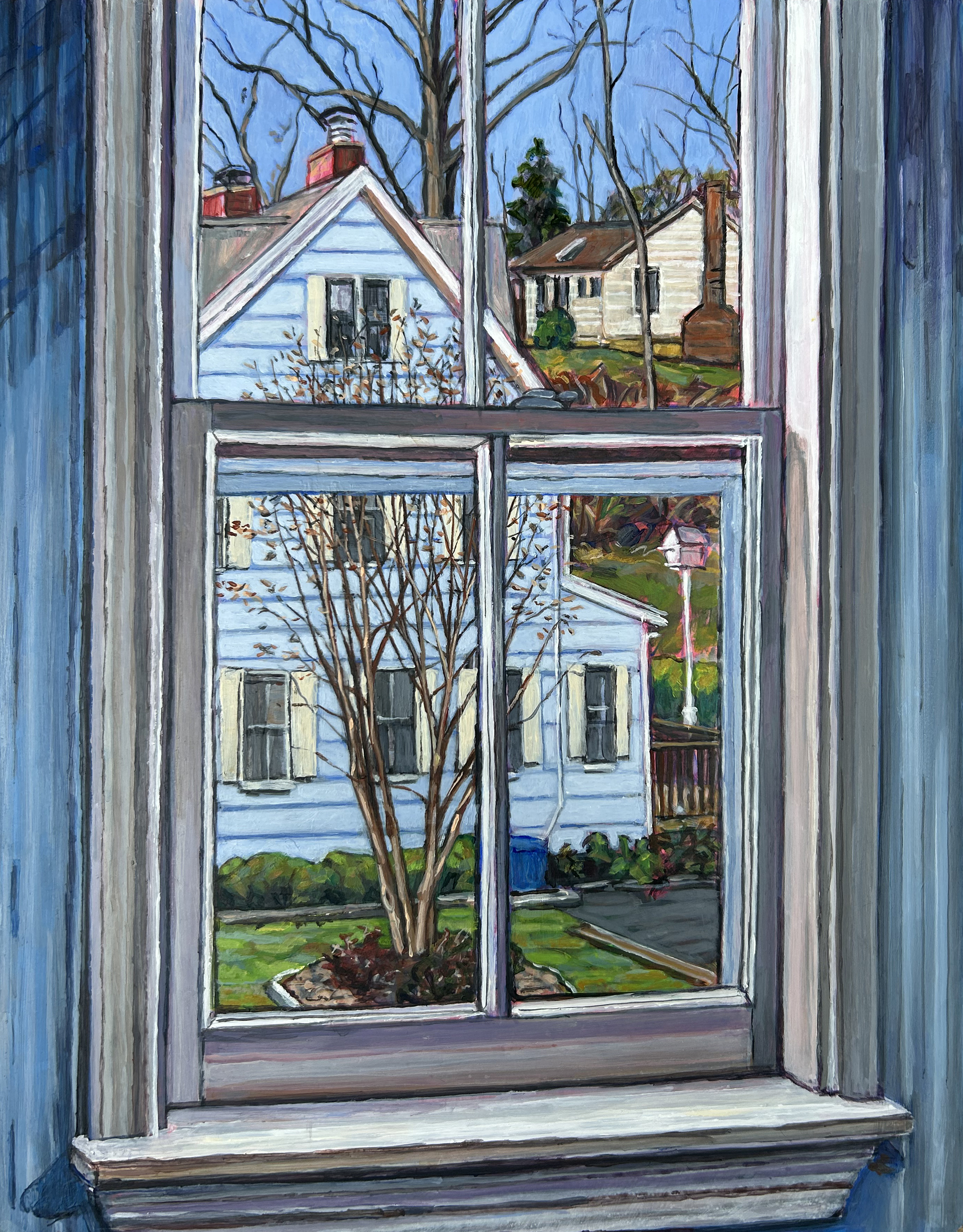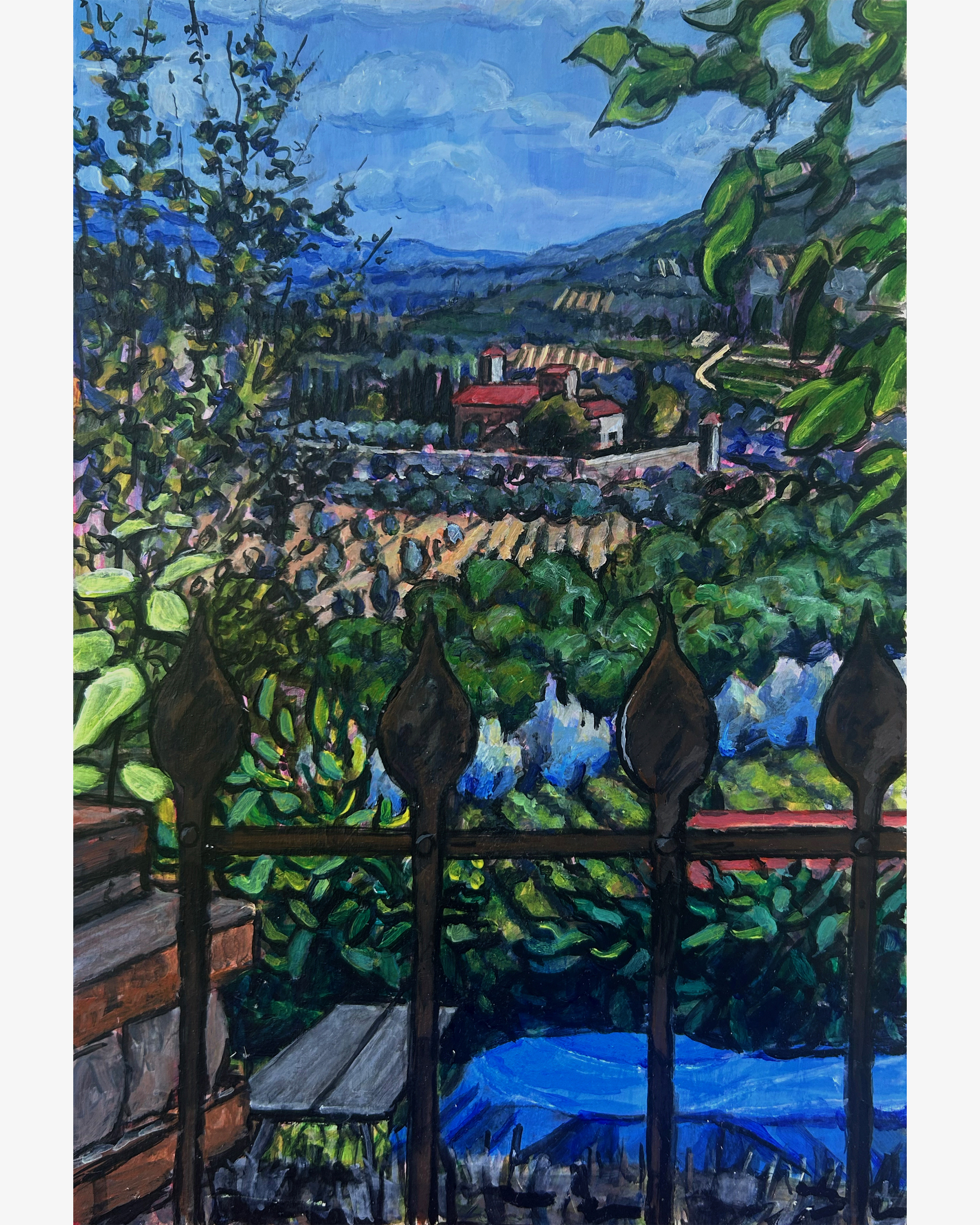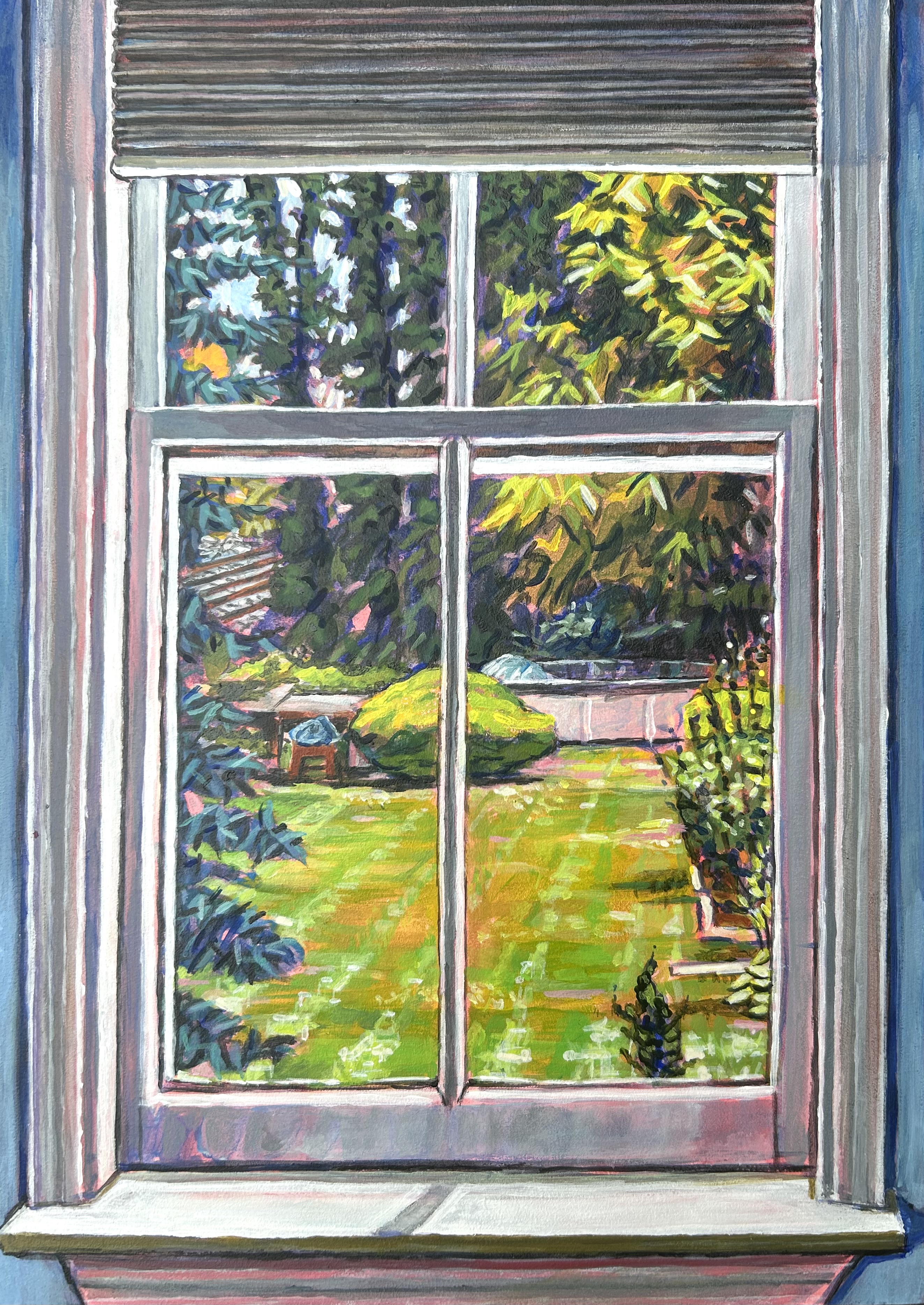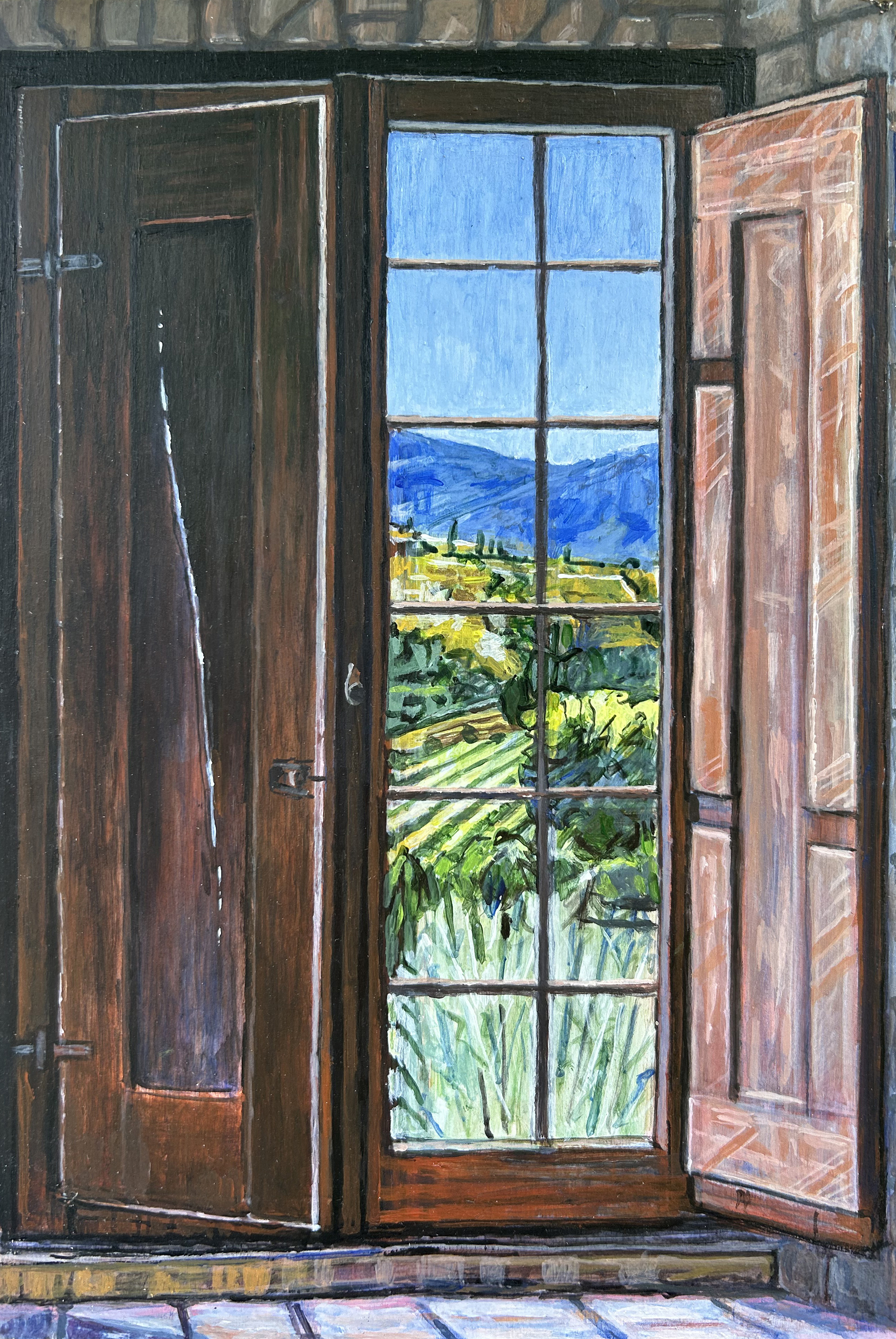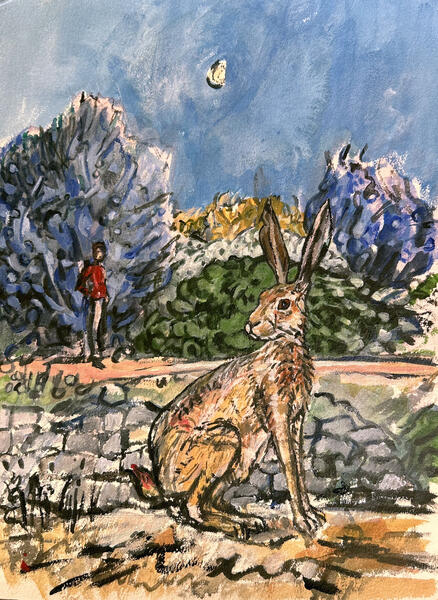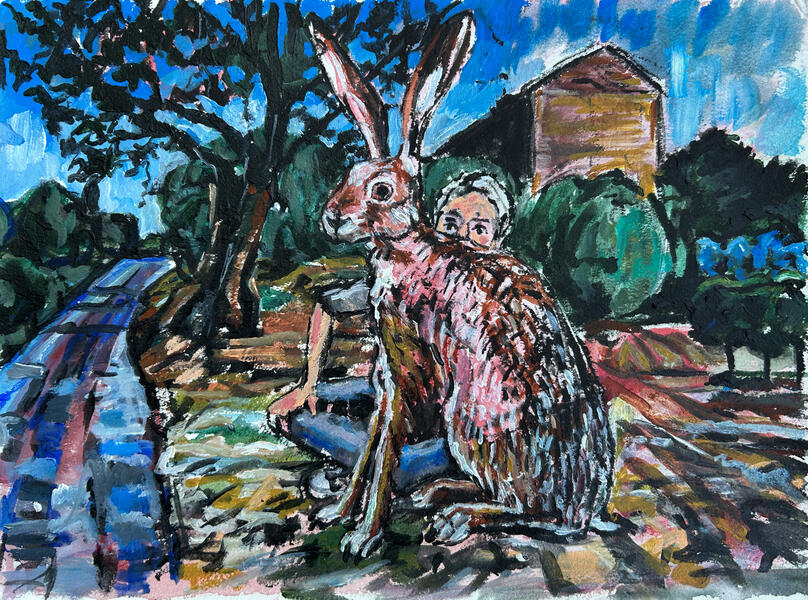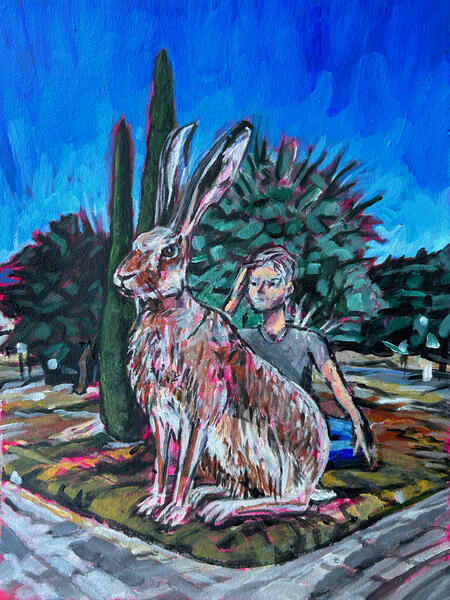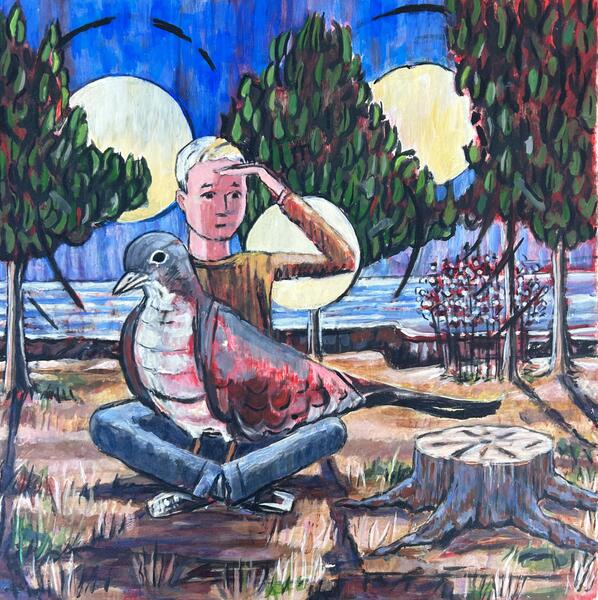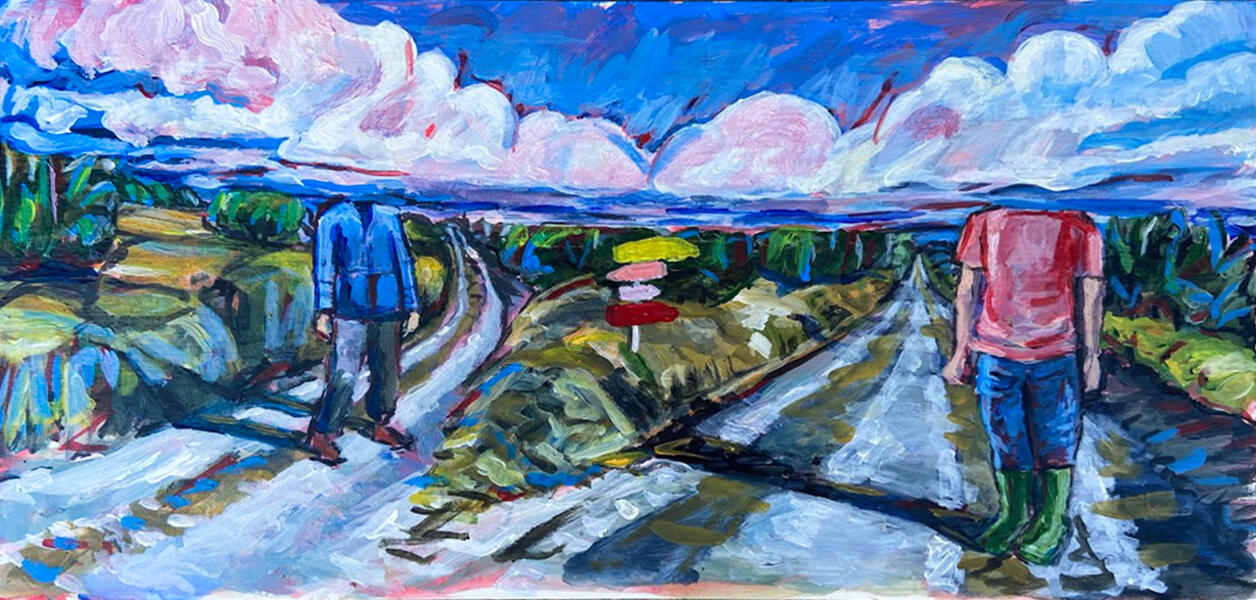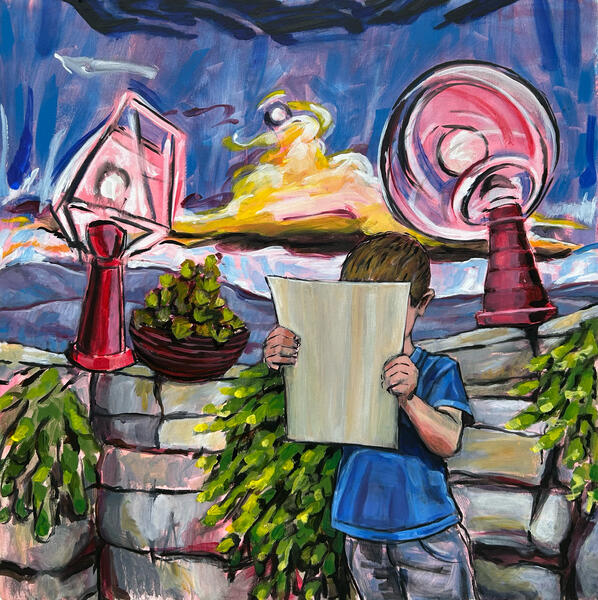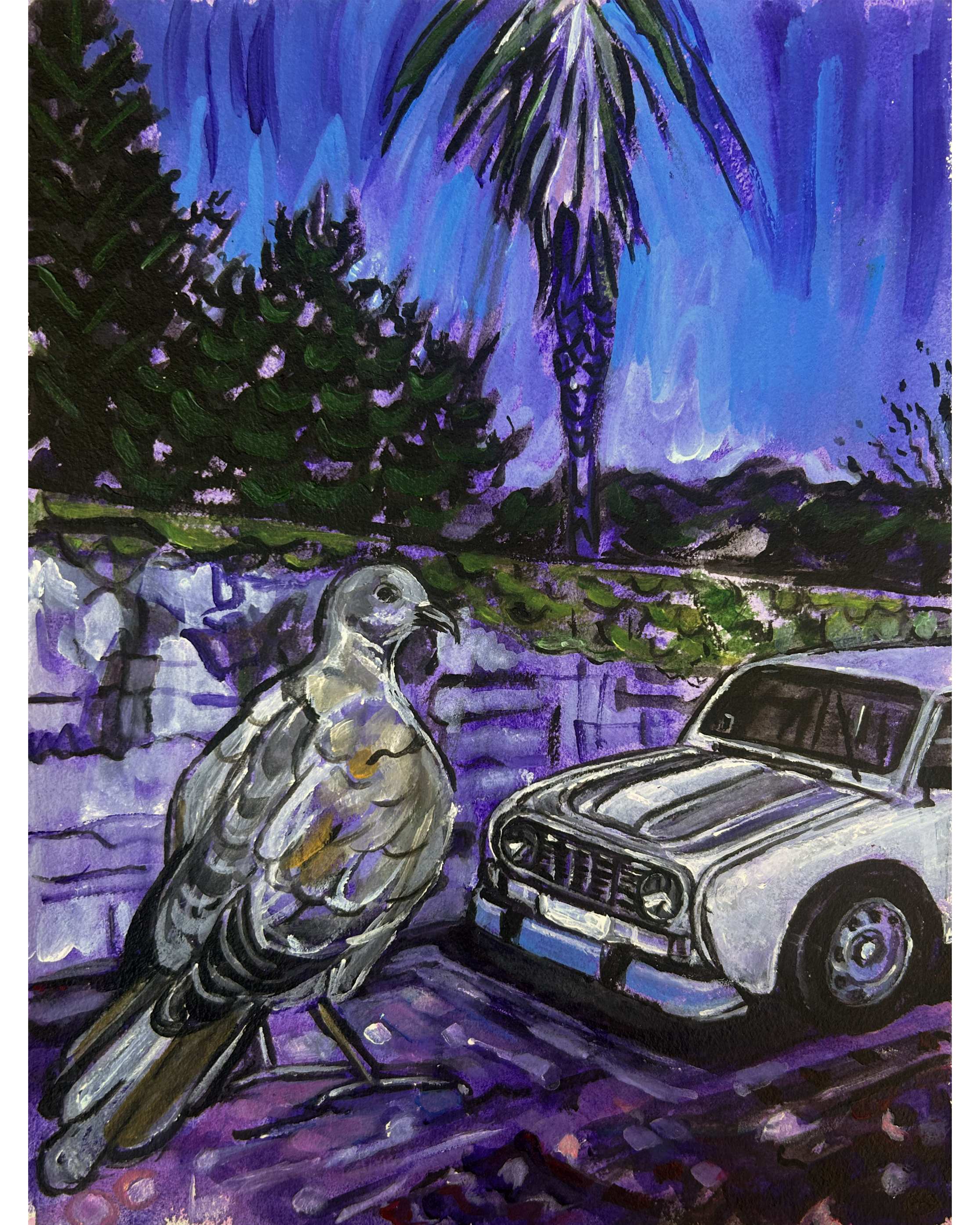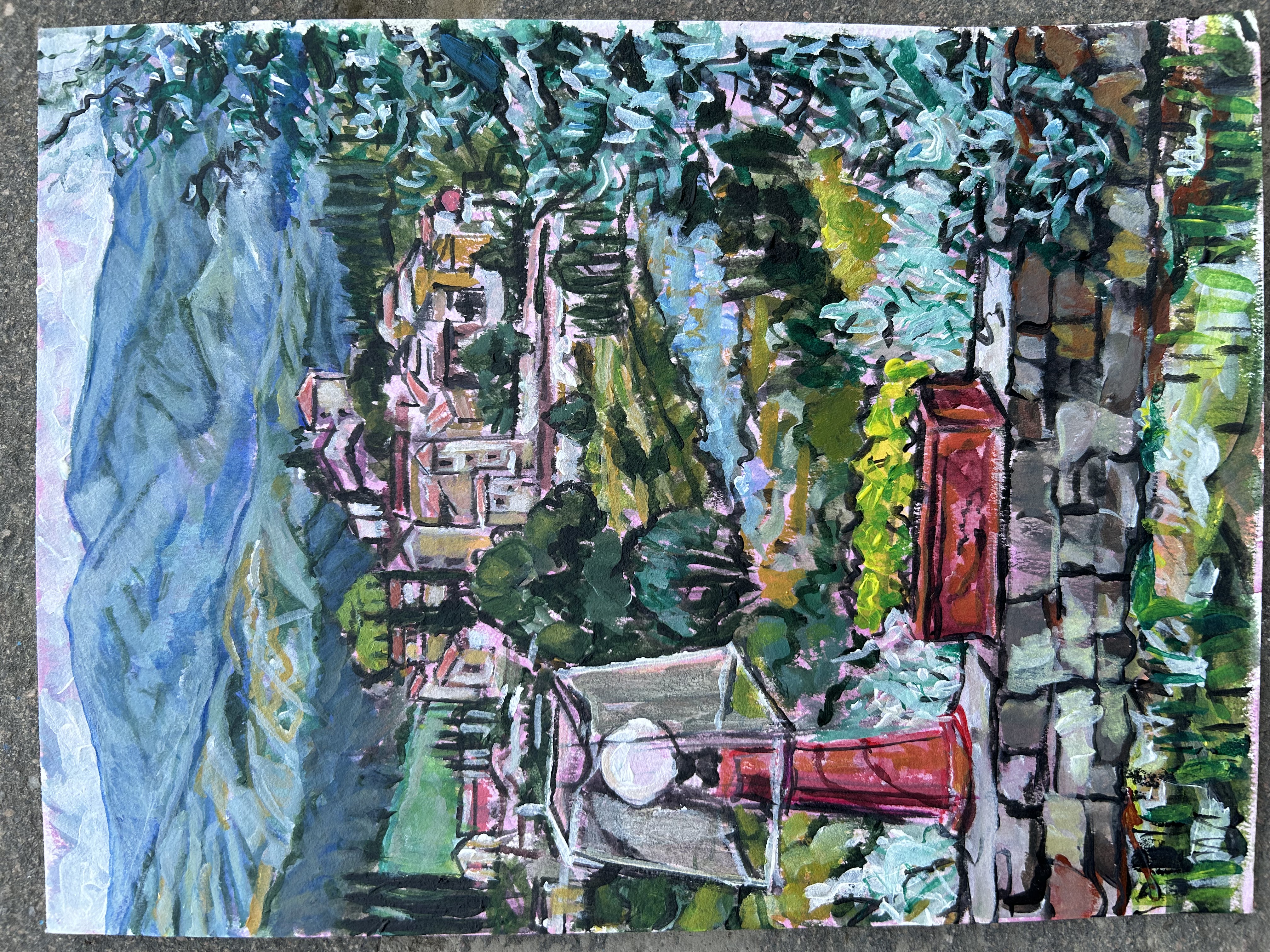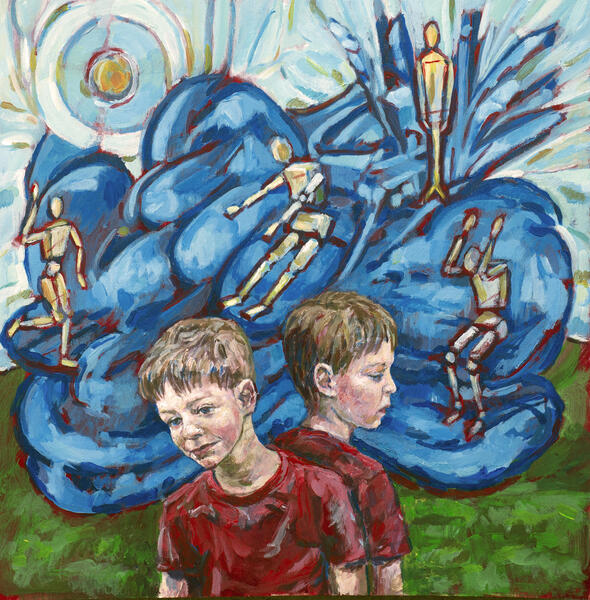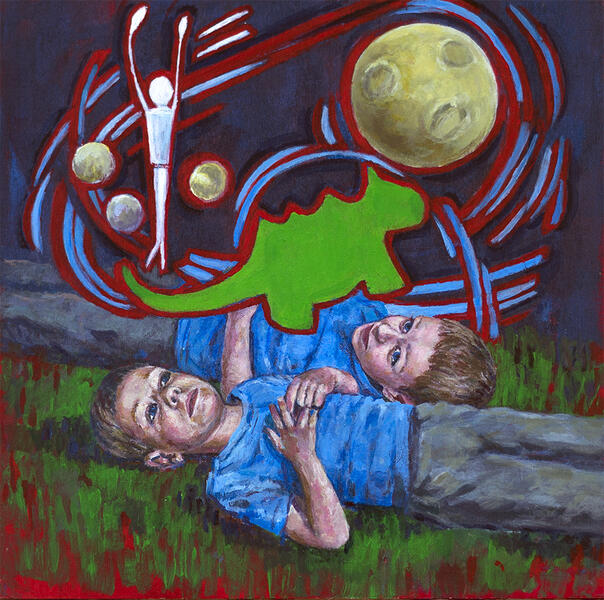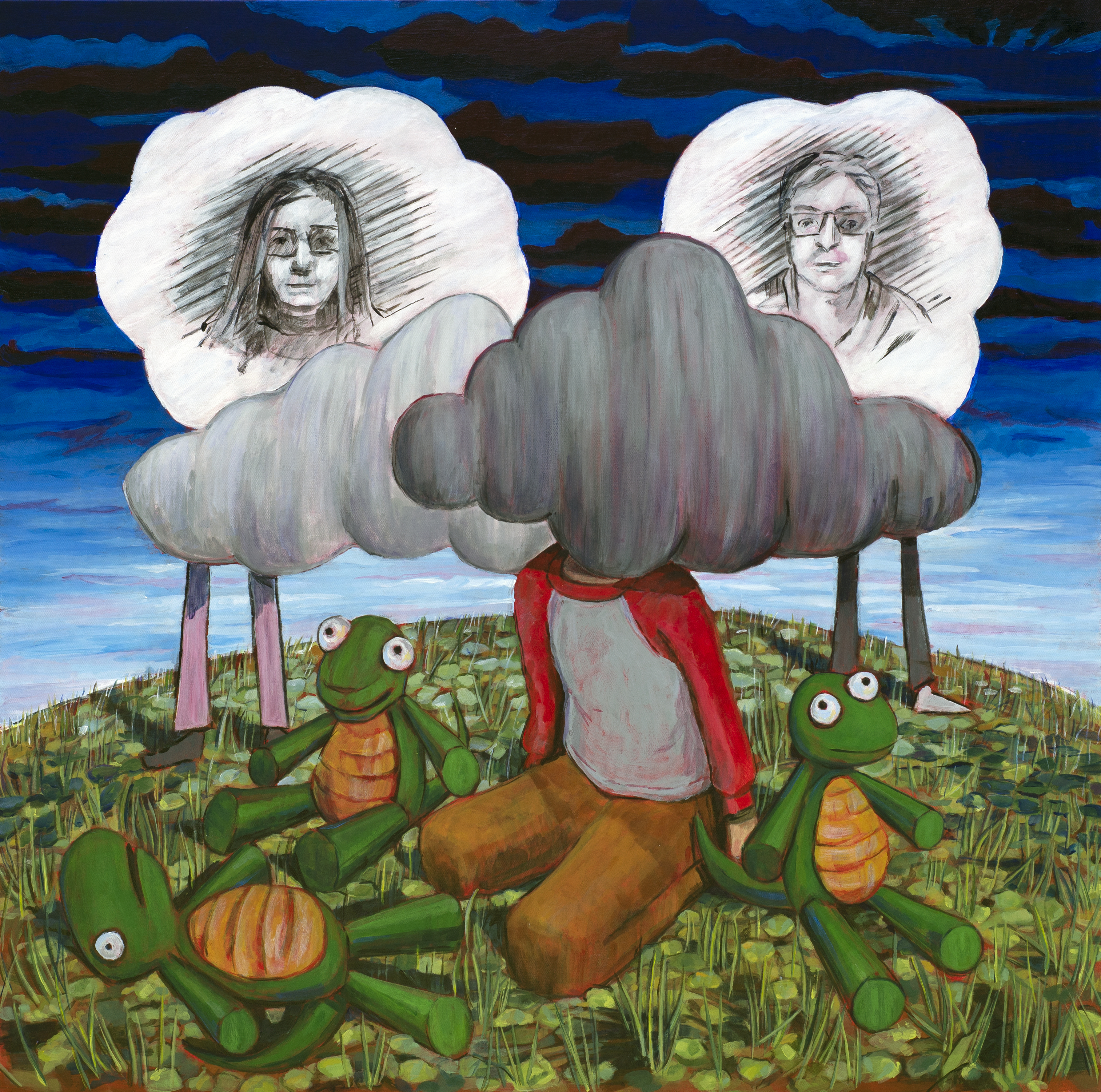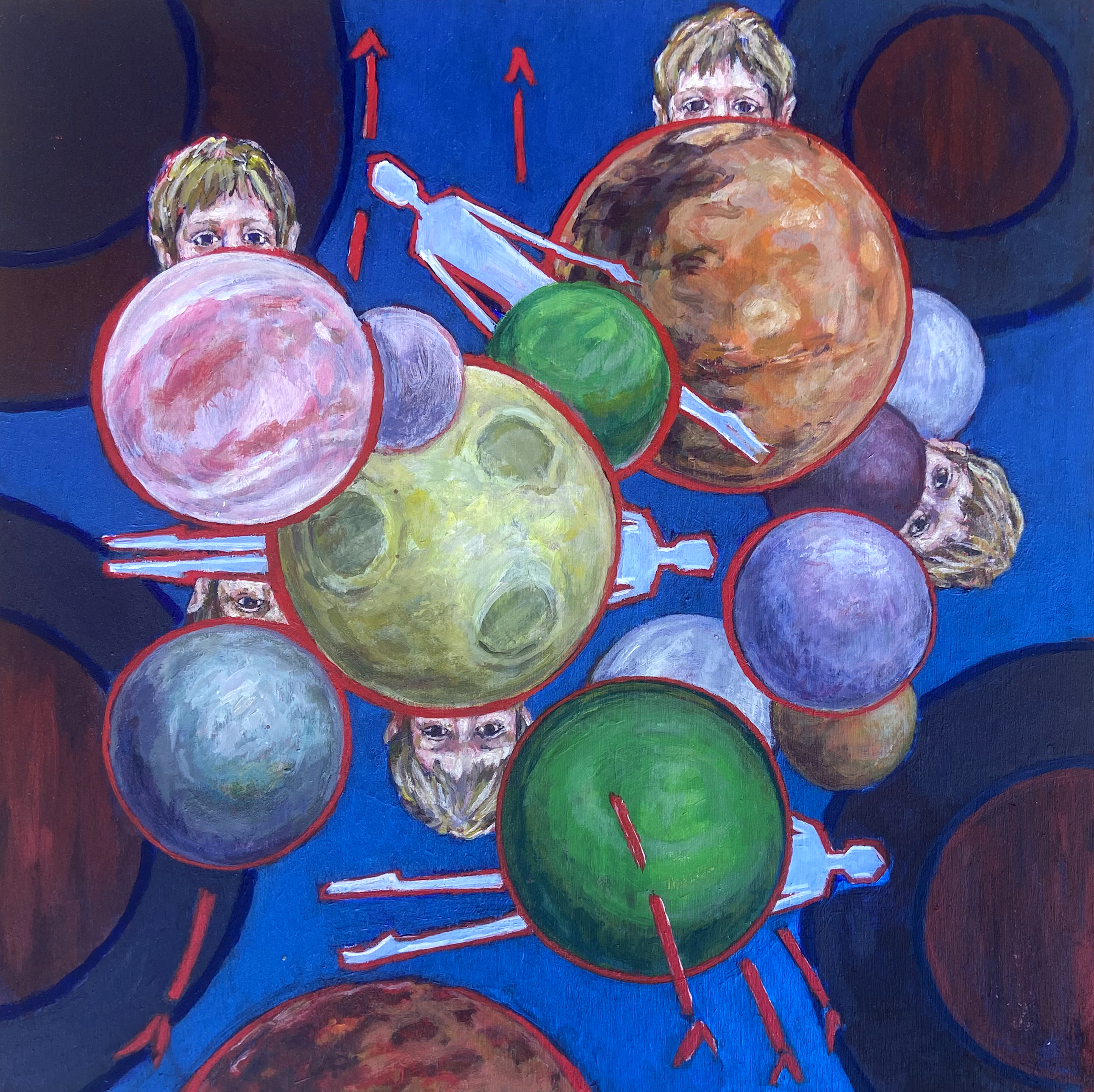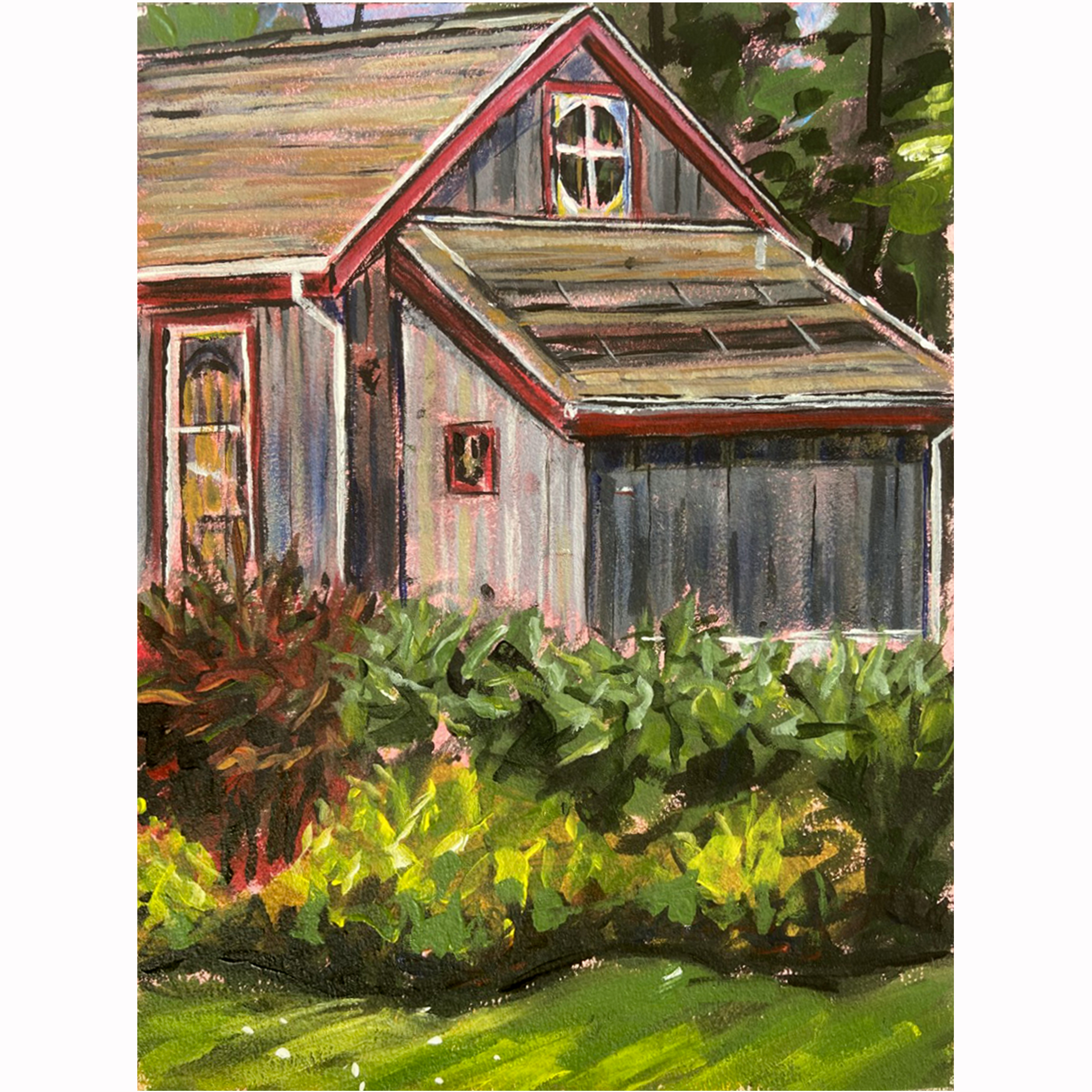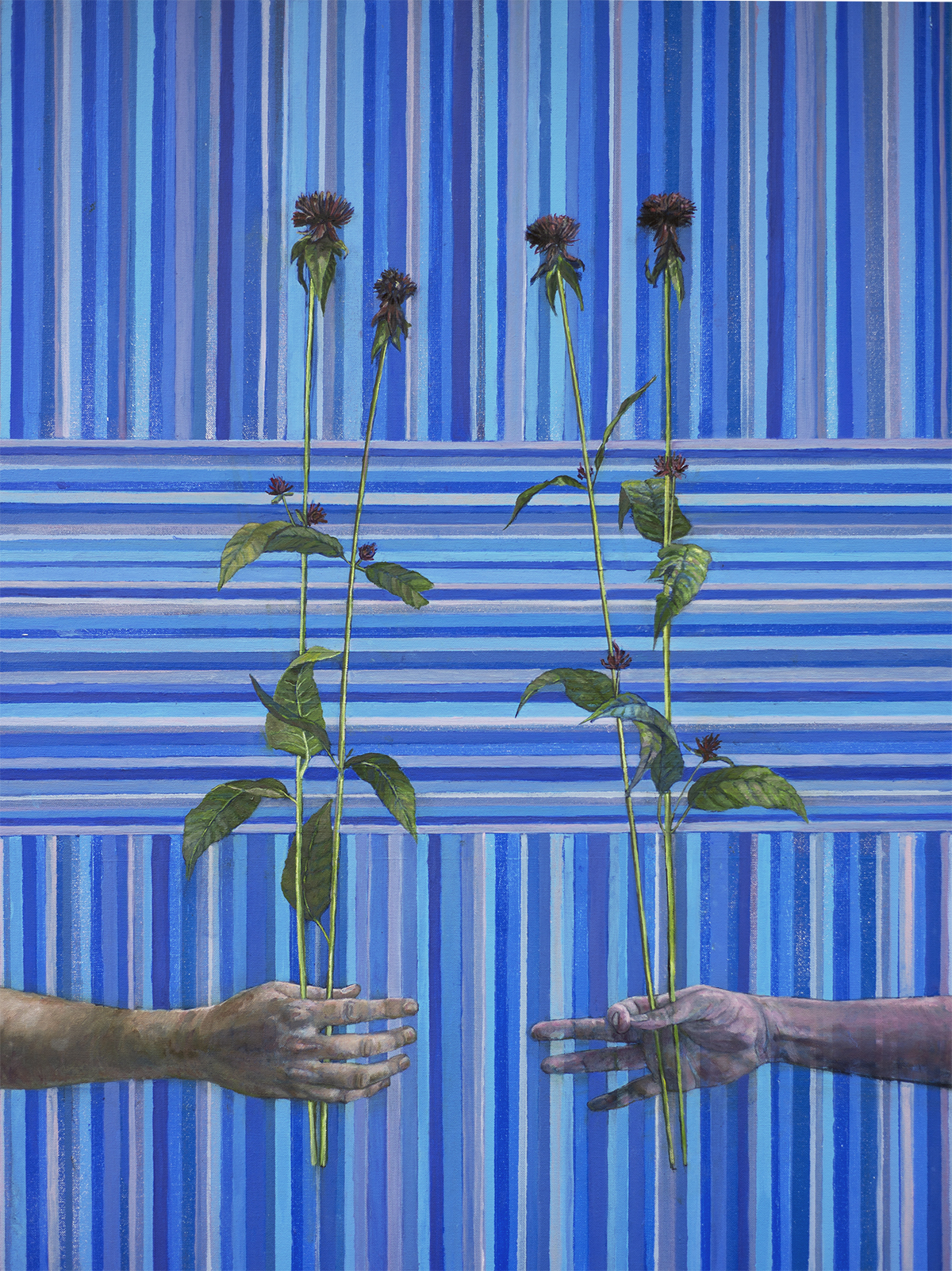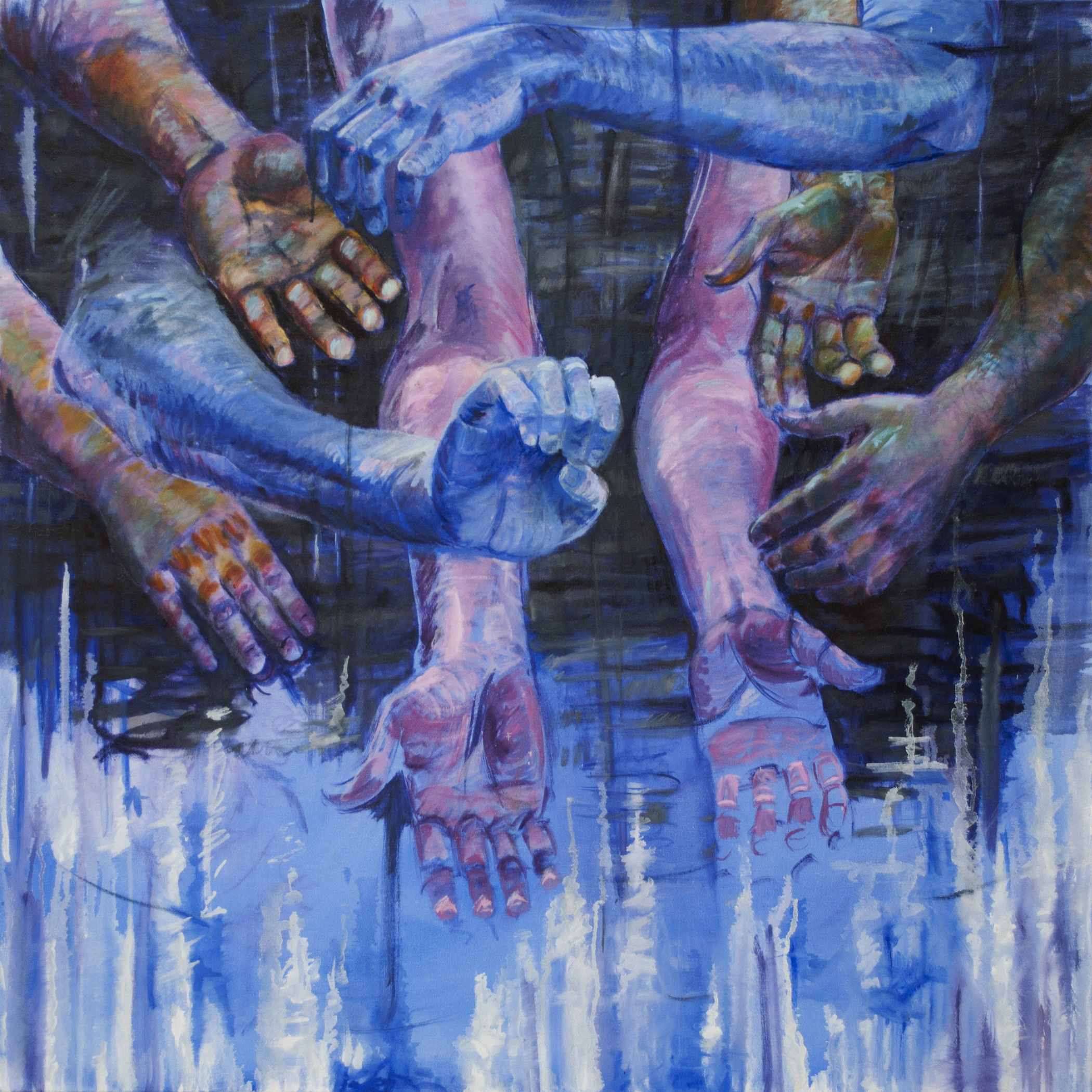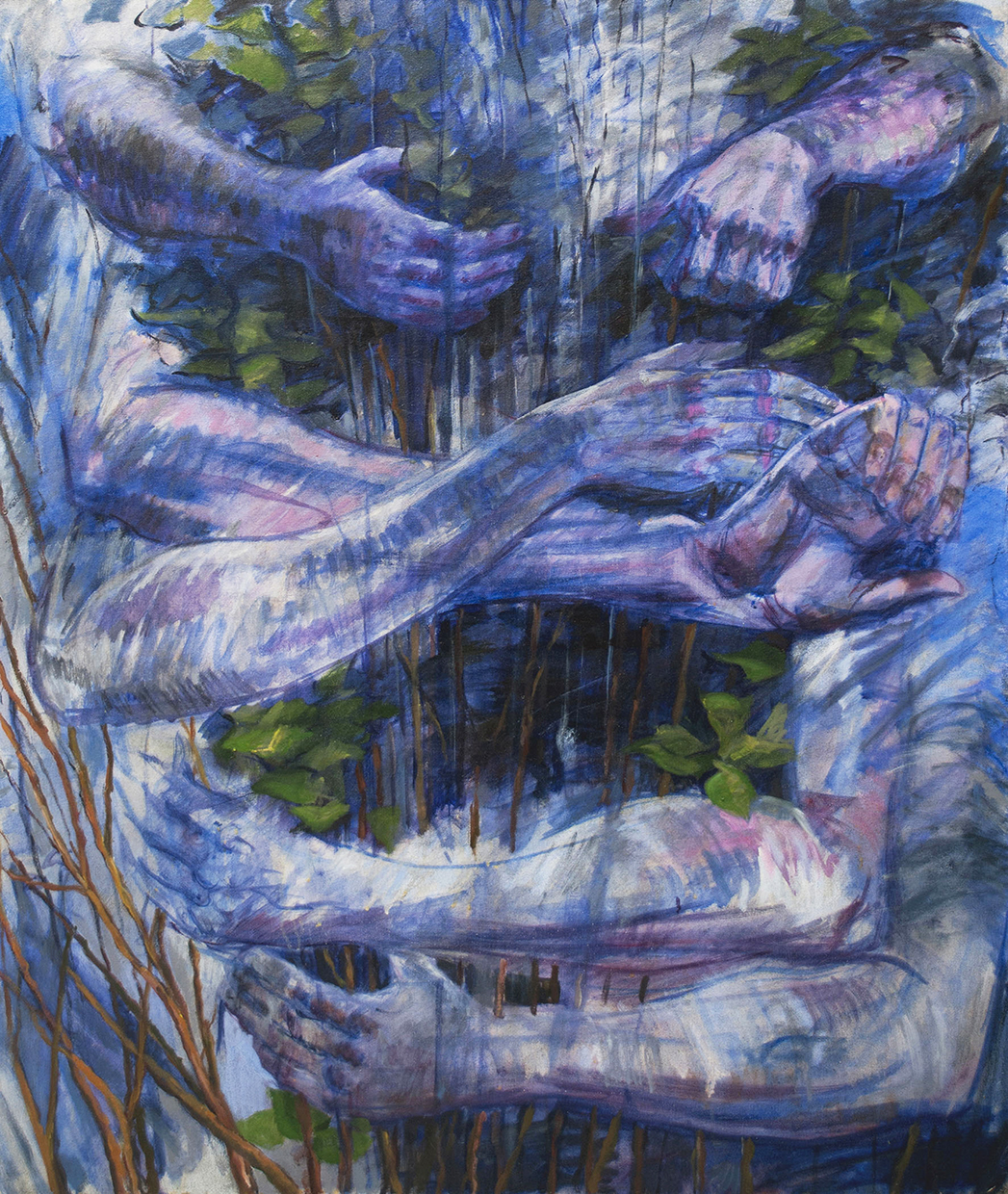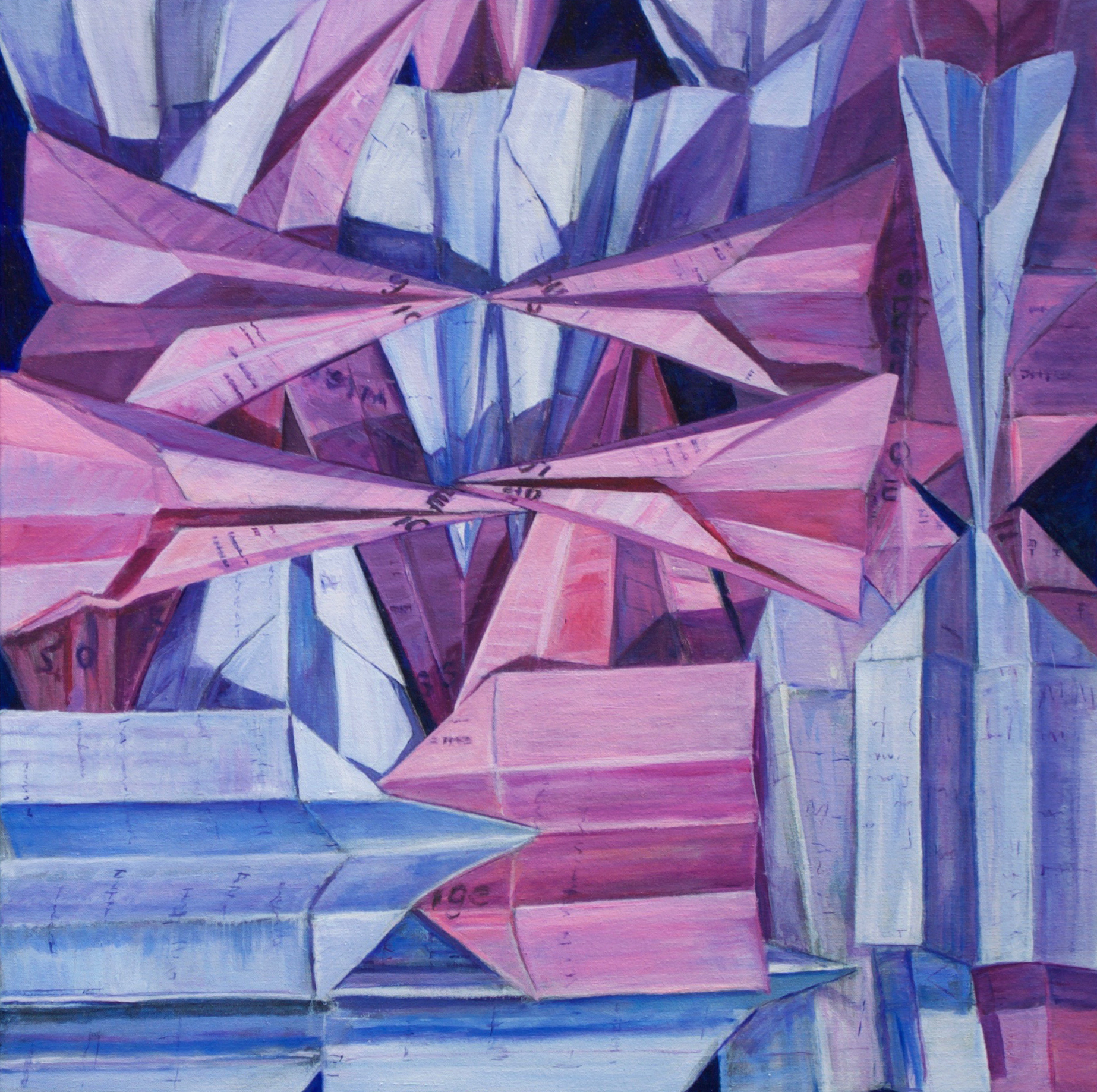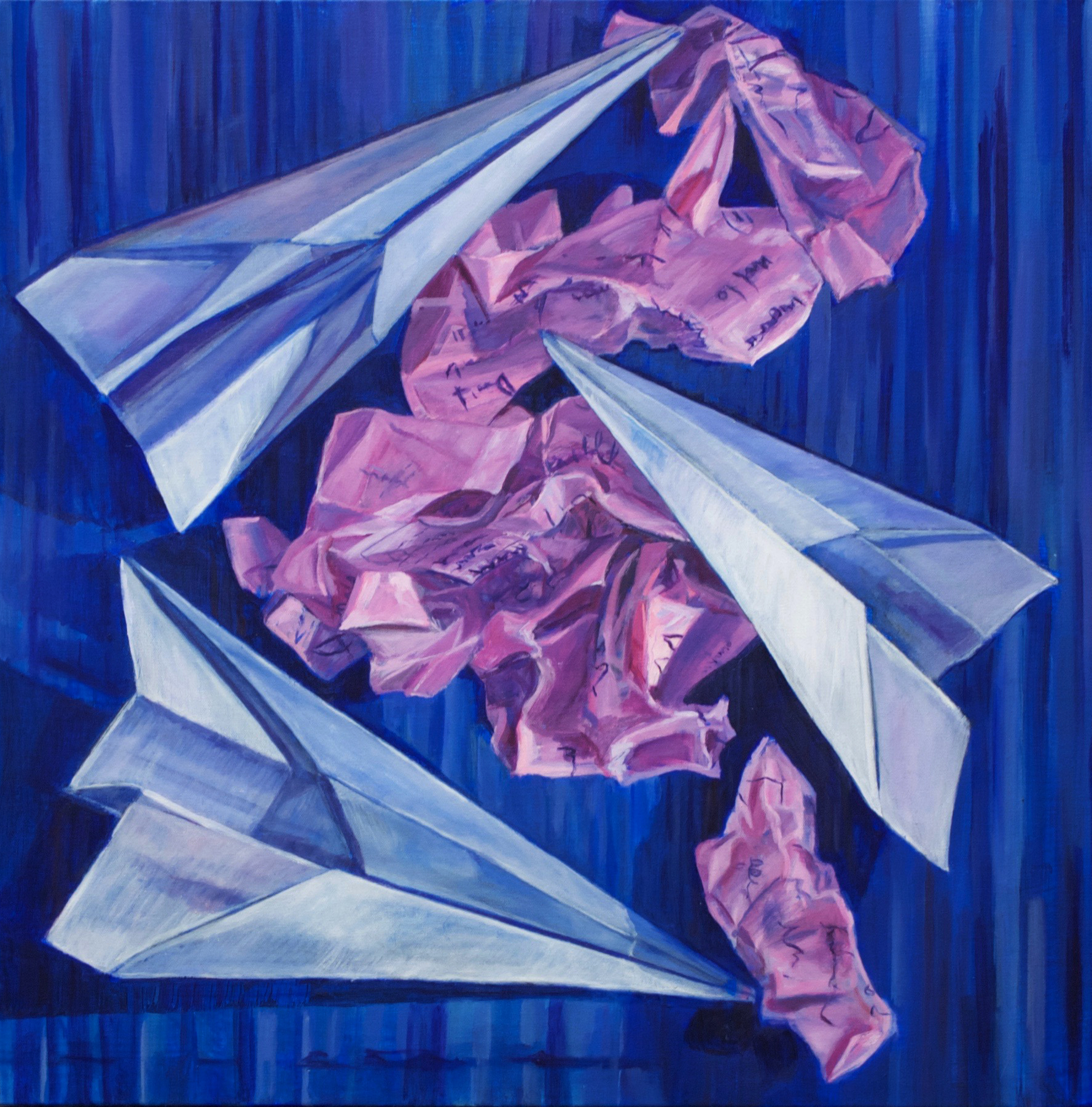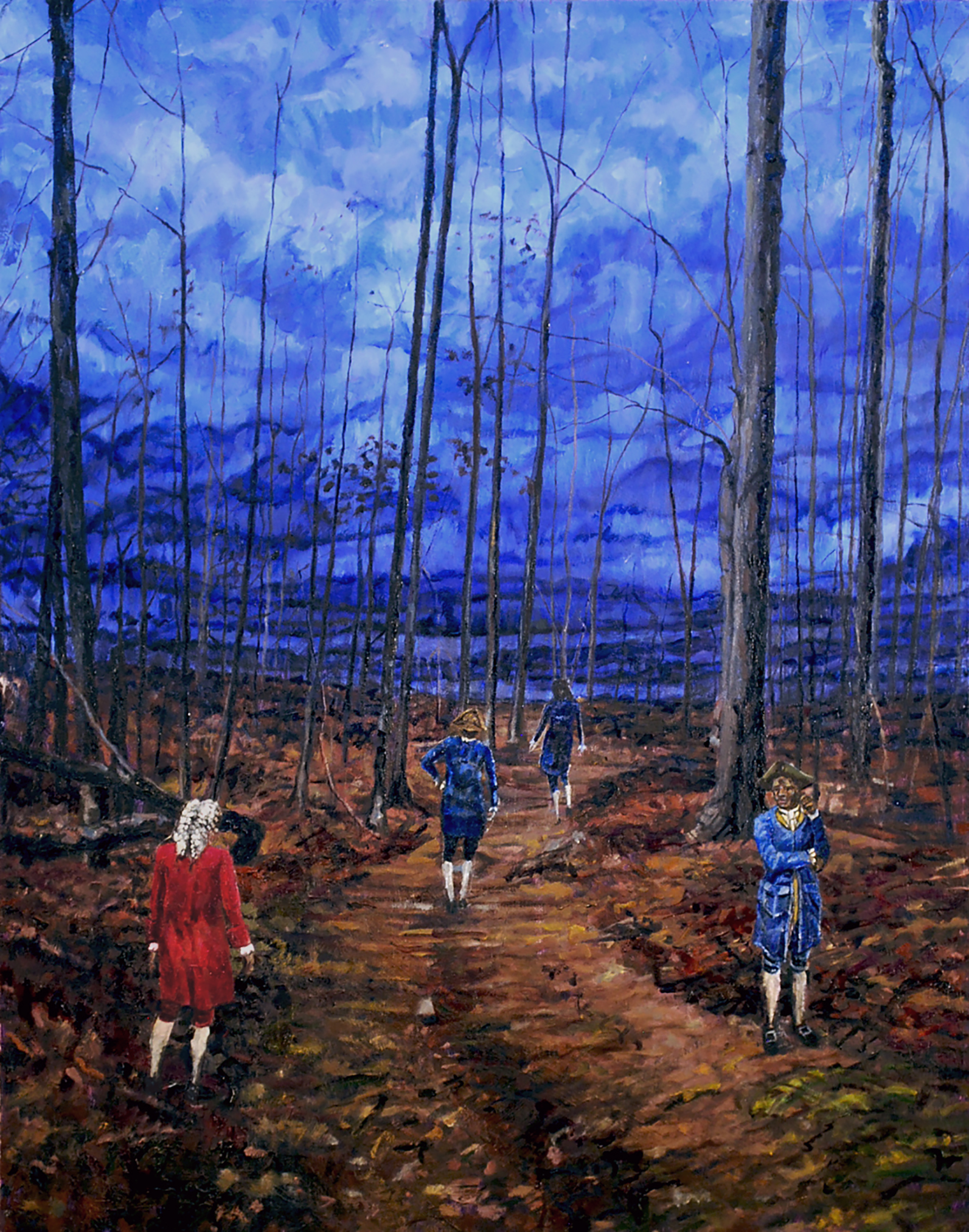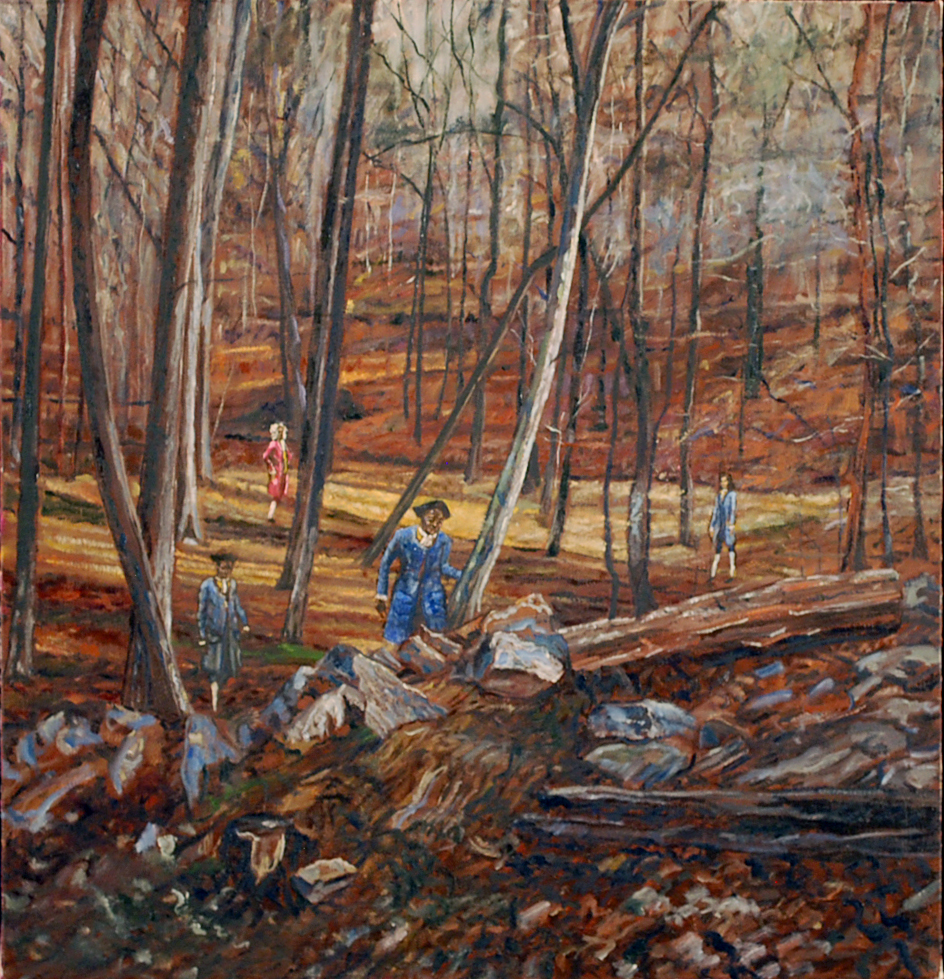About Teddy

Teddy Johnson's paintings explore storytelling, history, color, culture, and form. Solo exhibits include: The Matney Gallery, The American Poetry Museum, The Bromo Seltzer Arts Tower, MK Gallery, and the Museum of the Shenandoah Valley. His work has been exhibited at Art Gwangju, the Pearl Museum of Fine Art, Studio 39, Current Space, the Peale Museum, and St. Charles Projects. He completed artist residencies at La Macina di San Cresci in Chianti Italy in 2022, 23, 24 and 25. As a… more
Landscape Paintings 2025
-
 Stone and Window
Stone and WindowAcrylic on panel 8.5X12 in
Available for Purchase -
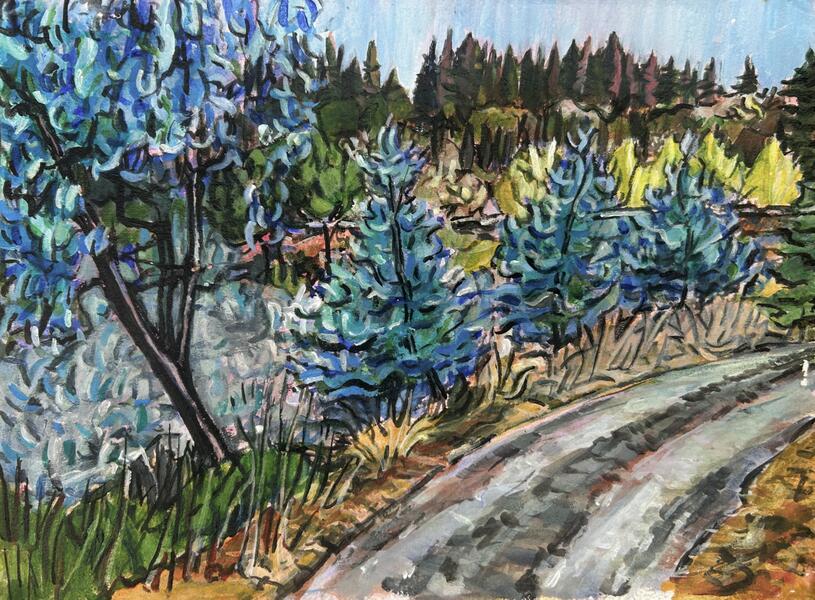 Across the Trees
Across the TreesAcrylic on Paper 9X12in
Available for Purchase -
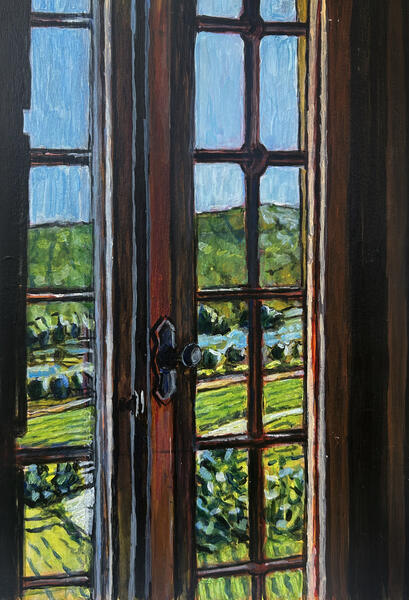 Out the Window Grate
Out the Window GrateAcrylic on Paper 8.5X12
Available for Purchase -
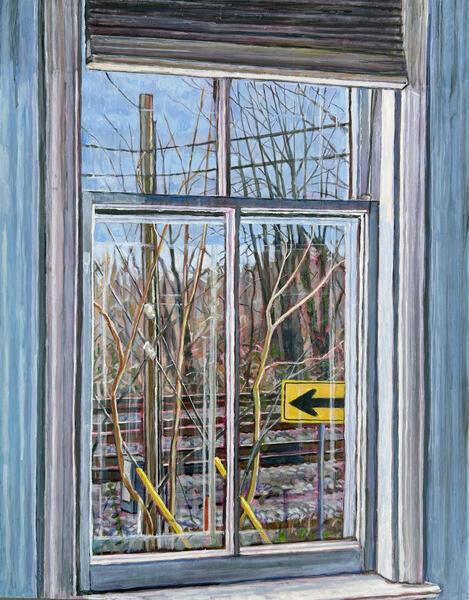 Window 4: Winter
Window 4: WinterAcrylic on Panel 11X14in
Available for Purchase -
 Window 5: Birdhouse and Blue
Window 5: Birdhouse and BlueAcrylic on Panel 11X14in
Available for Purchase -
 Gate
GateAcrylic on Panel 8.5X12in
Available for Purchase -
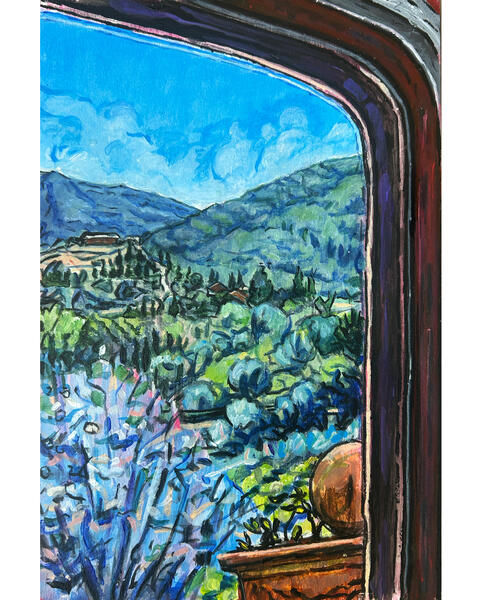 Window: Near the horizon
Window: Near the horizonAcrylic on Panel 8.5X12in
Available for Purchase -
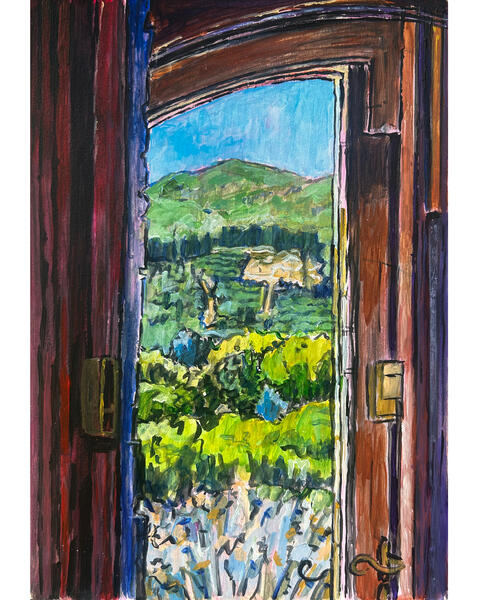 Window: Color Ladder
Window: Color LadderAcrylic on Panel 8.5X12in
Available for Purchase
Landscape Paintings 2024
These paintings were painted in two places, my studio in Baltimore County Maryland and in Chianti Italy from observation over the last year.
-
 Afternoon Sun
Afternoon Sun10X14 acrylic on panel
-
 Doors
DoorsAcrylic on Panel 8.5X12 in
-
 Open Shutter
Open ShutterAcrylic on Panel 8.5X12 in
-
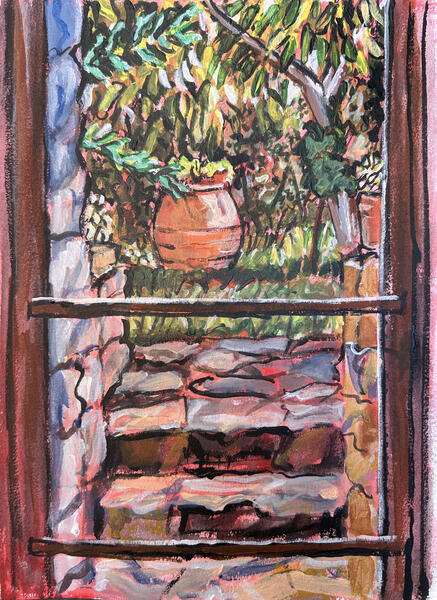 Garden Door
Garden DoorAcrylic on paper, 9X12
-
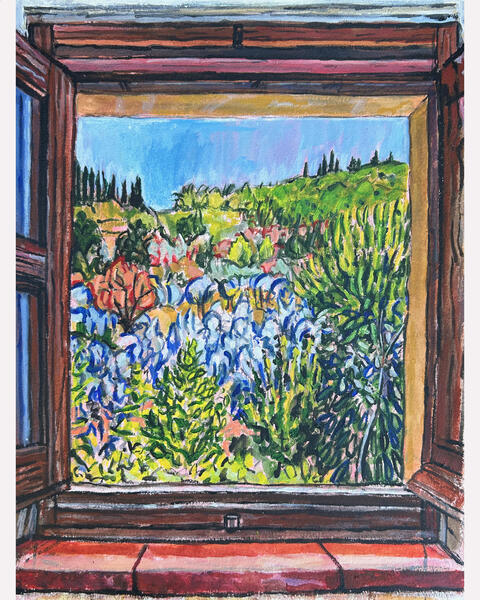 Afternoon Sun
Afternoon SunAcrylic on Paper 9X12in
-
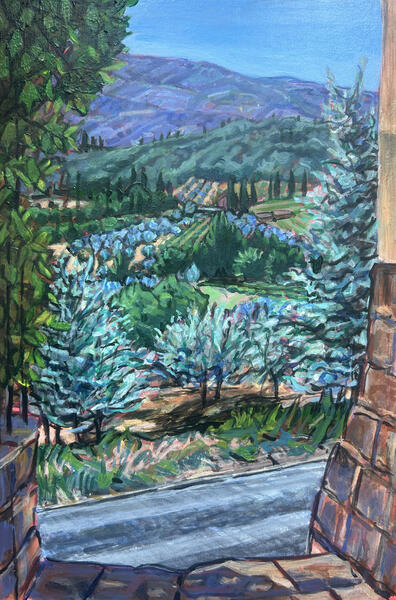 From the Shade
From the ShadeAcrylic on Panel. 9X12in
-
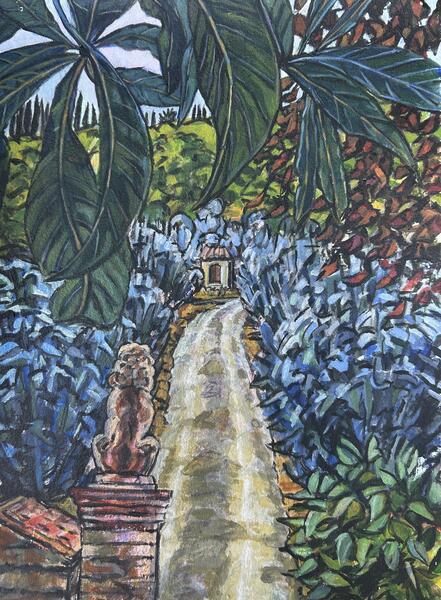 Via San Cresci
Via San CresciAcrylic on paper 9X12in
-
 Valley
Valleyacrylic on panel
-
 Rolling Hills
Rolling HillsAcrylic on Paper 9X12 in
-
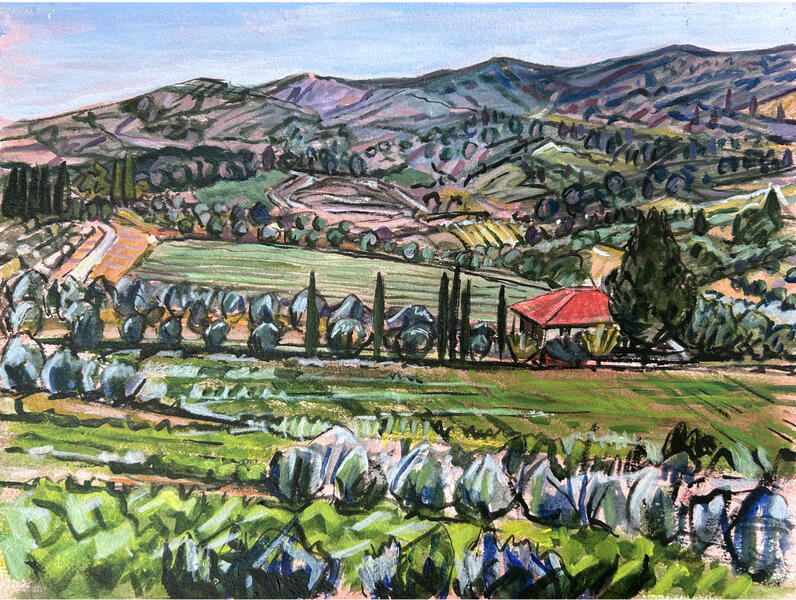 Toward Greve
Toward Greveacrylic on paper 9X12in
Portals 2023 - Present
My recent works follow two main paths, observational paintings and paintings that are the result of an internal investigation. The paintings were painted in two places, my studio in Baltimore County Maryland and in Chianti Italy, over the last few years. These two paths developed in the aftermath of the pandemic and along my continuing journey as a parent.
The internal works consist of allegorical fever dreams, and far away landscapes. Whether from life or internally developed, my works are all part of a process of looking. These paintings are allegories striving to describe the gaps between what I would like to articulate and what I can't.
Landscape Paintings 2023
These paintings were painted in two places, my studio in Baltimore County Maryland and in Chianti Italy from observation in 2023
-
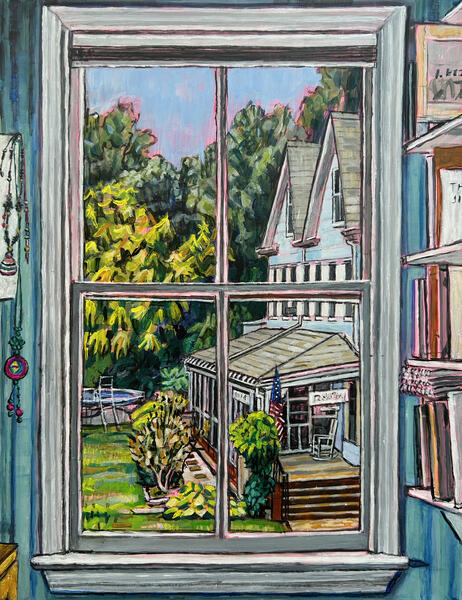
-

-
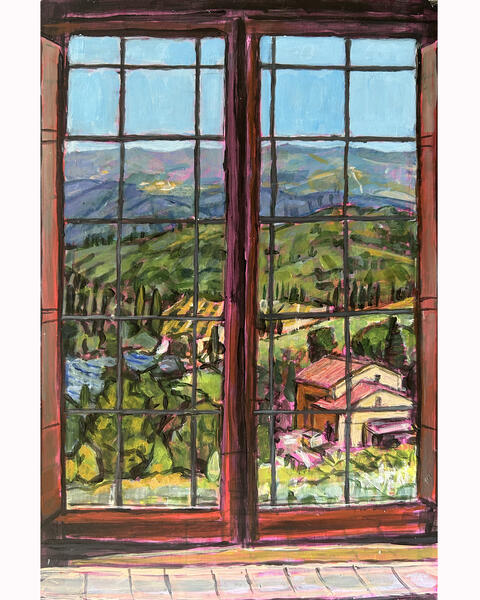
-
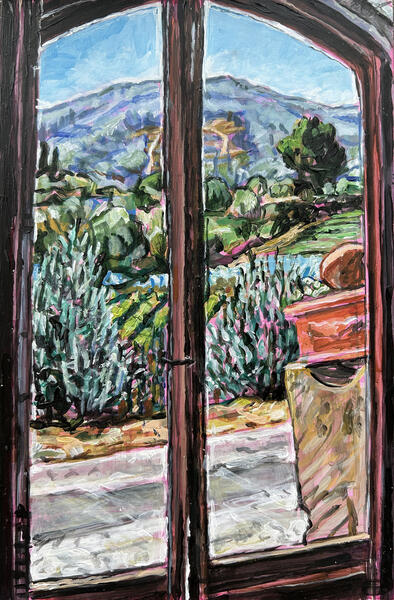
-
 Montefioralle from the garden
Montefioralle from the garden"Montefioralle from the garden" Acrylic on paper 9X12 in 2023
Available for Purchase -
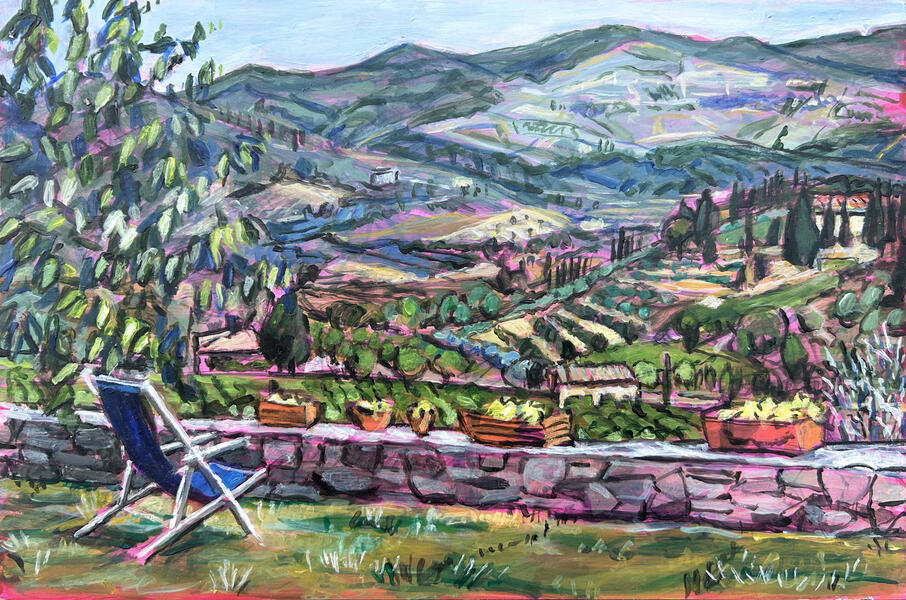 “Chair” acrylic on panel 8.5 x 12 in
“Chair” acrylic on panel 8.5 x 12 in“Chair” acrylic on panel 8.5 x 12 in
Available for Purchase -
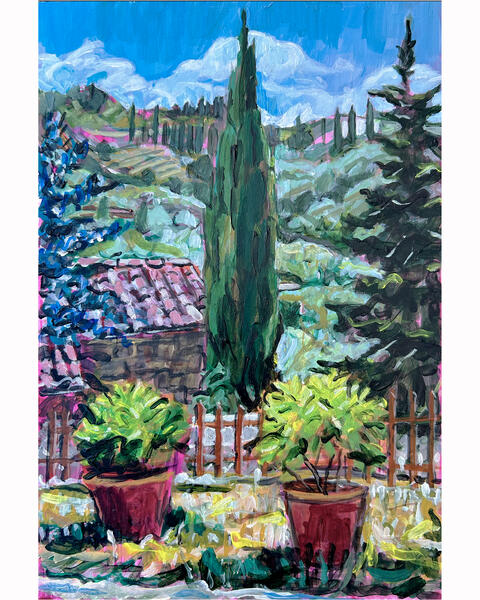 Summer Heat
Summer Heat“Summer Heat” acrylic on panel 8.5 x 12 in. 2023
Available for Purchase -
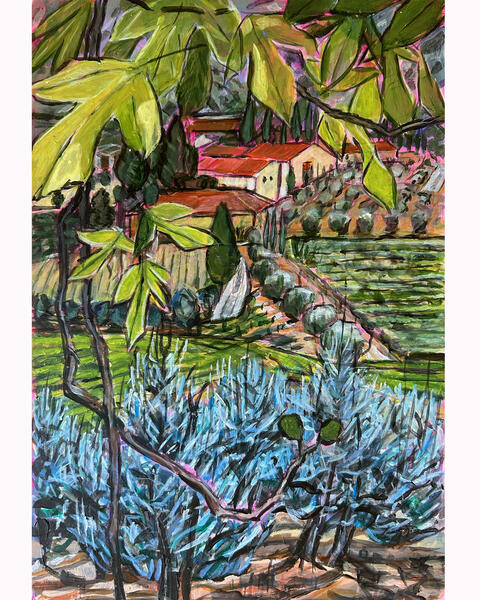 Rows and Rows
Rows and Rows"Rows and Rows” acrylic on panel 8.5x12in 2023
Available for Purchase
World Outside Series (2021- 2022)
My recent works follow two main paths, observational paintings and paintings that are the result of an internal investigation. The paintings were painted in two places, my studio in Baltimore County Maryland and in Chianti Italy, over the last few years. These two paths developed in the aftermath of the pandemic and along my continuing journey as a parent.
The internal works consist of allegorical fever dreams, and far away landscapes. Whether from life or internally developed, my works are all part of a process of looking. Some paintings involve meditating on what is means to be a father, or to have been a child. Some involve looking at the inside of an idea or dream, as the world, and I, and loved one’s change. These paintings are are allegories striving to describe the gaps between what I would like to articulate and what I can’t.
Landscape Paintings (2022)
Landscape paintings painted on location.
-
Fig Tree Shade9X12in Acrylic on Paper 2022
-
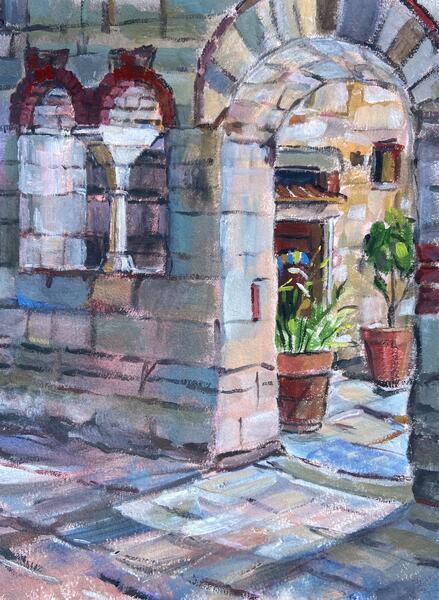 Portico of Pieve San Cresci9X12in Acrylic on Paper 2022
Portico of Pieve San Cresci9X12in Acrylic on Paper 2022 -
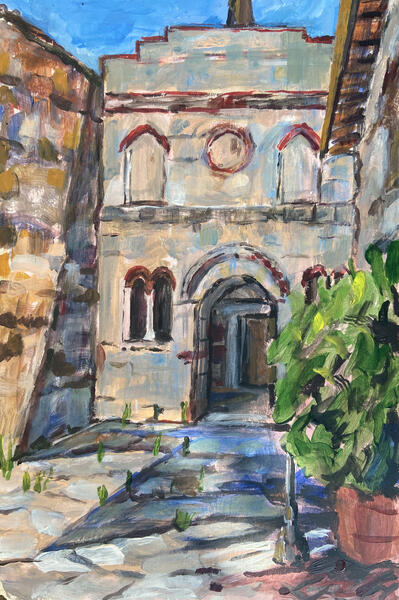 Pieve di San Cresci9X12in Acrylic on Paper 2022
Pieve di San Cresci9X12in Acrylic on Paper 2022 -
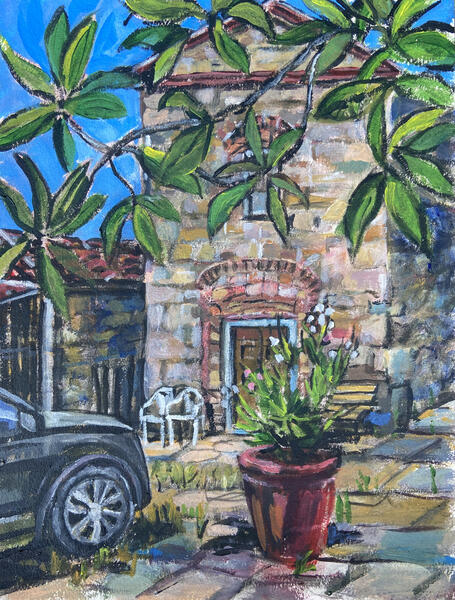 Hazelnut and Pieve9X12in Acrylic on Paper 2022
Hazelnut and Pieve9X12in Acrylic on Paper 2022 -
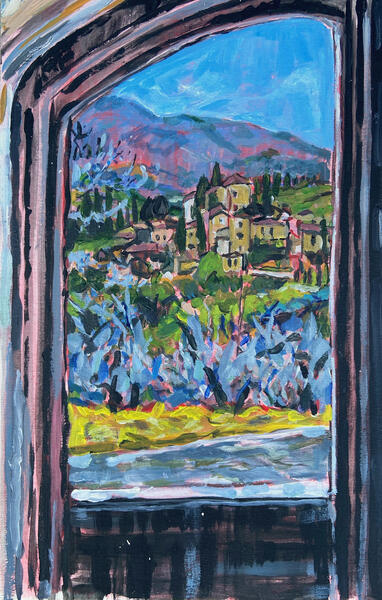 View of Montefioralle12X4in Acrylic on Paper 2022
View of Montefioralle12X4in Acrylic on Paper 2022 -
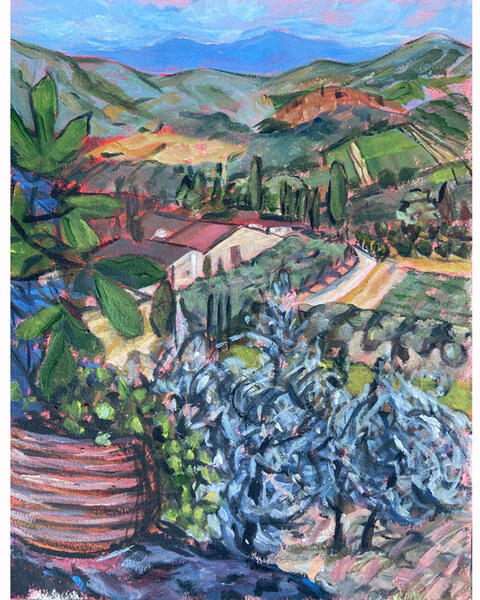 View From the Garden9X12in Acrylic on Paper 2022
View From the Garden9X12in Acrylic on Paper 2022 -
 Vermont Roadside9X12in Acrylic on Paper 2022
Vermont Roadside9X12in Acrylic on Paper 2022 -
 Vermont Cabin9X12in Acrylic on Paper 2022
Vermont Cabin9X12in Acrylic on Paper 2022
Offering (2021) Forest Edge (2020) and Kindling/Tinder (2019)
Offering (2021)
These paintings are inspired by the unknown and the unknowable.
Themes include nature as a guide and source of personal healing. Some of my paintings take
inspiration from both rituals and votives as manifestations of desire and prayer.
The Forest Edge (2020)
The forest edge is a margin between two worlds. It is a transition zone between light and shade, the highly cultivated and the wild. It can serve as an entrance, but can also be dense and hard to penetrate.
Kindling/Tinder (2019)
The five paintings in the series Kindling/Tinder evolved from looking specifically at the bones of plants in late fall through early spring. Bare branches and dry brush hold the promise of new growth and seed. In an unfamiliar landscape they are place holders for what is about to come. The bare twigs, grass, and goldenrod I depict in my series are materials that might be used to start a fire.
-
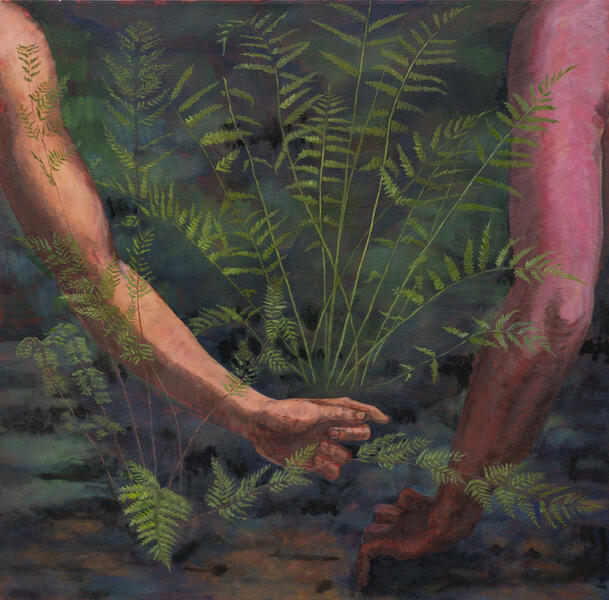 Forest's Edge IForest's Edge I - Oil on Canvas 2020 - - Oil on Canvas - 2020 - 36X36 in
Forest's Edge IForest's Edge I - Oil on Canvas 2020 - - Oil on Canvas - 2020 - 36X36 in -
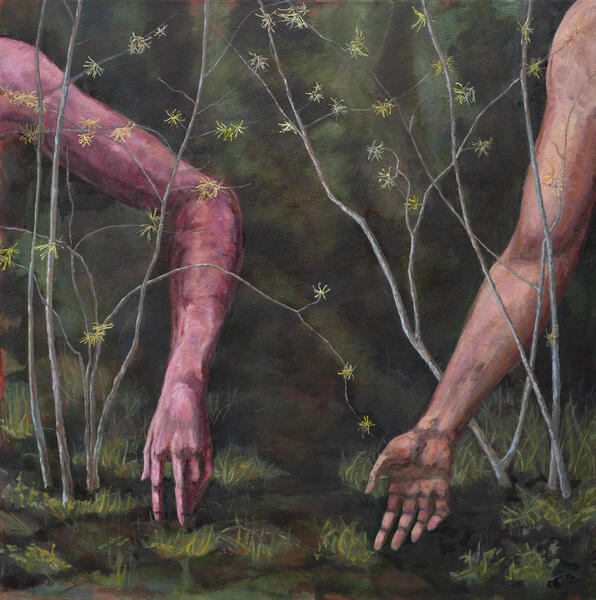 Forest's Edge IIForest's Edge II - Oil on Canvas - 2020 - 36X36 in
Forest's Edge IIForest's Edge II - Oil on Canvas - 2020 - 36X36 in -
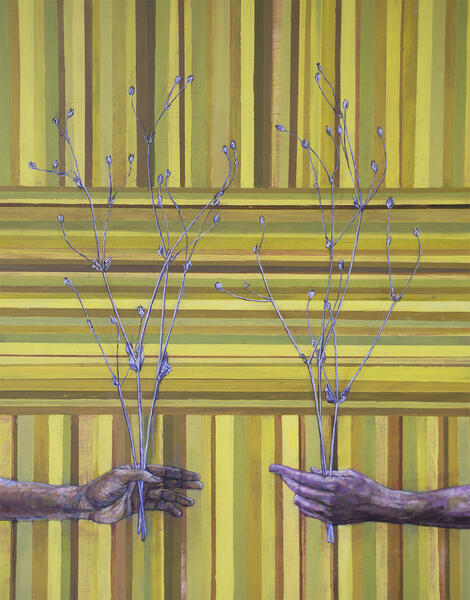 Offering - Rose Campion, Oil and Acrylic on Canvas 30X38Offering - Rose Campion, Oil and Acrylic on Canvas 30X38
Offering - Rose Campion, Oil and Acrylic on Canvas 30X38Offering - Rose Campion, Oil and Acrylic on Canvas 30X38 -
 Offering - Bee Balm, Oil and Acrylic on Canvas 30X38Offering - Bee Balm, Oil and Acrylic on Canvas 30X38
Offering - Bee Balm, Oil and Acrylic on Canvas 30X38Offering - Bee Balm, Oil and Acrylic on Canvas 30X38 -
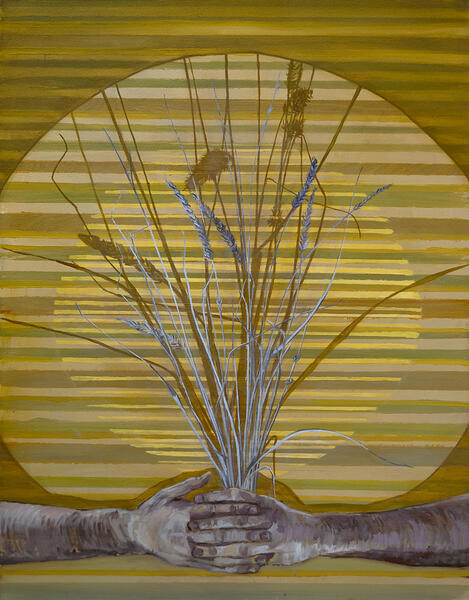 Kindling / Tinder VKindling / Tinder V Oil on Canvas 30 X 40 in
Kindling / Tinder VKindling / Tinder V Oil on Canvas 30 X 40 in -
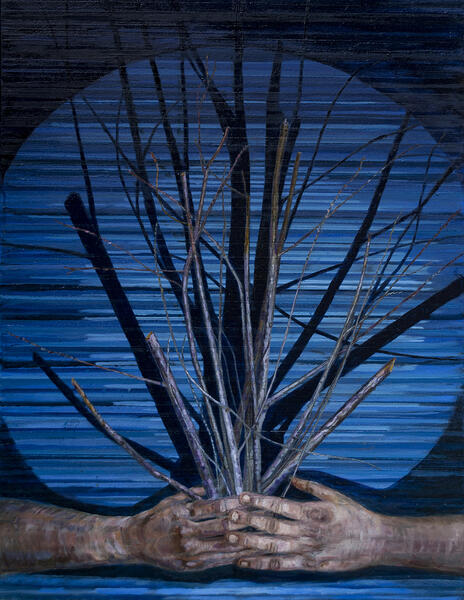 Kindling / Tinder IOil on Canvas 30X40 in
Kindling / Tinder IOil on Canvas 30X40 in -
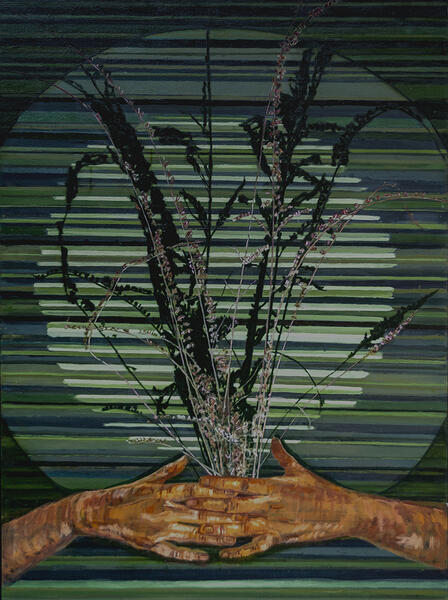 Kindling / Tinder IIOil on Canvas 30X40 in
Kindling / Tinder IIOil on Canvas 30X40 in -
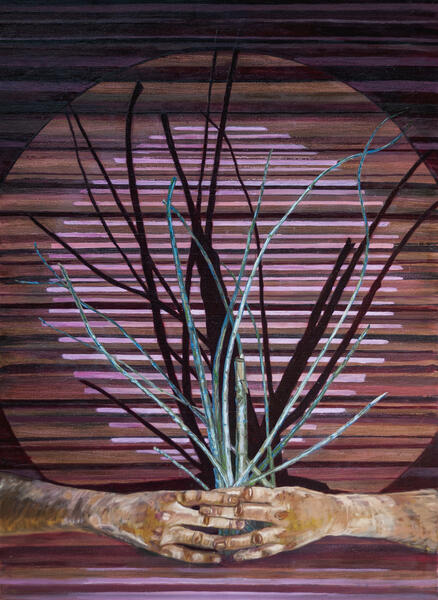 Kindling / Tinder IIIOil on Canvas 30 X 40 in
Kindling / Tinder IIIOil on Canvas 30 X 40 in -
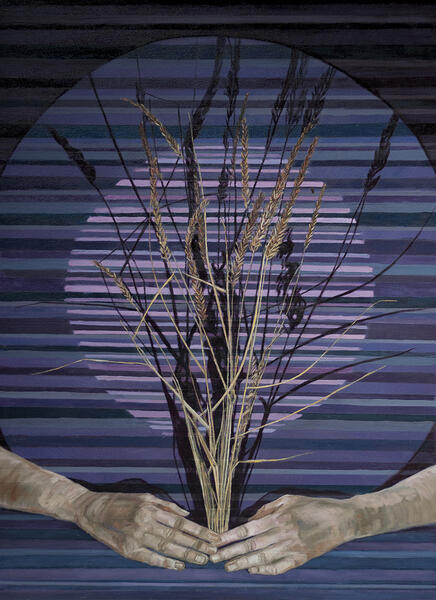 Kindling / Tinder IVOil on Canvas 30 X 40 in
Kindling / Tinder IVOil on Canvas 30 X 40 in -
 Kindling / Tinder VIKindling / Tinder VI Oil on Canvas 30 X 40 in
Kindling / Tinder VIKindling / Tinder VI Oil on Canvas 30 X 40 in
Abound (2017-2018)
Ideas of realization, birth, rebirth, and struggle inform the works in this series.
Throughout most of these works, hands search, climb, embrace, push forward, and fall back, both together and separately. They interweave across the picture plane through a space that is hinted at or imagined.
Some of the works use paper as an observed setting. Collected ephemera and detritus such as Bingo cards act as the raw materials of assemblages, which I observe and interpret through oil paint and brush.
-
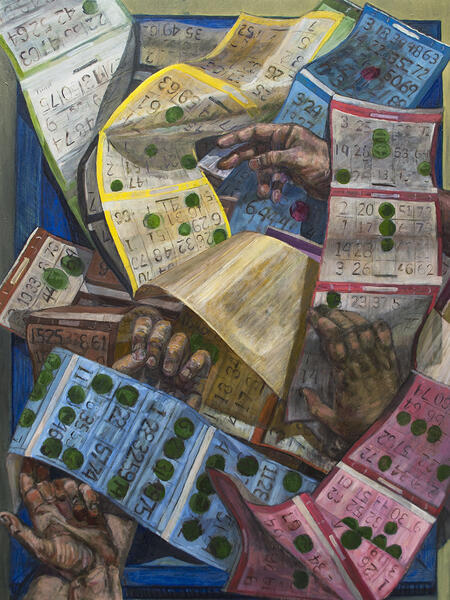 BingoOil on Canvas 30 X 40 in
BingoOil on Canvas 30 X 40 in -
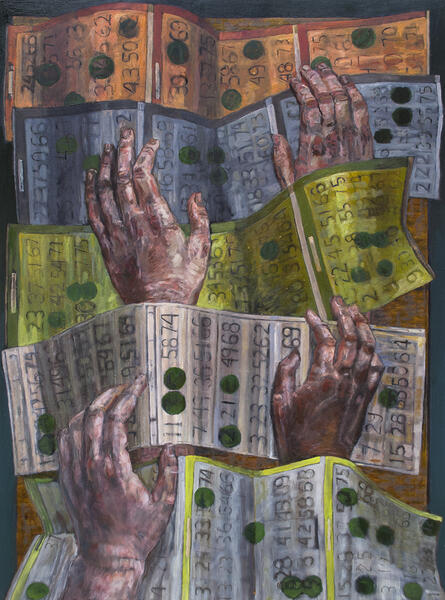 Bingo IIBingo II, 2018, Oil on Canvas, 37X32 in
Bingo IIBingo II, 2018, Oil on Canvas, 37X32 in -
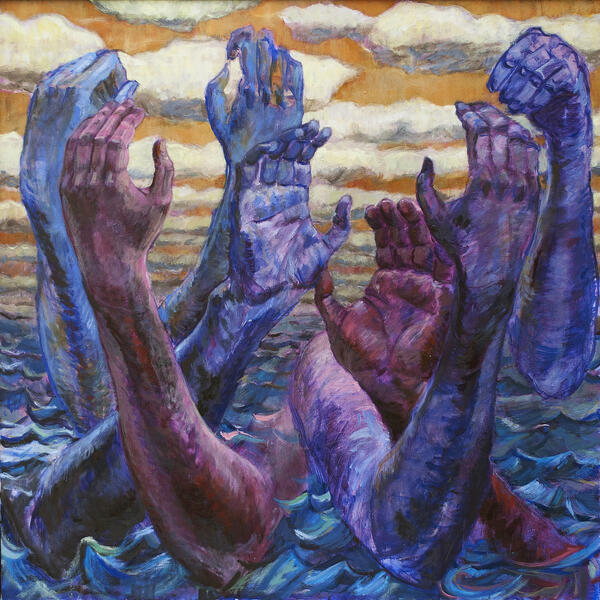 Across the Ocean DeepOil on Canvas, 30 X 40 in
Across the Ocean DeepOil on Canvas, 30 X 40 in -
 Process/ProcessionProcess/Procession, 2018, Oil on Canvas 36X36 in
Process/ProcessionProcess/Procession, 2018, Oil on Canvas 36X36 in -
 WashOil on Canvas 36 X 36 in
WashOil on Canvas 36 X 36 in -
 LilacLilac, 2018, Oil on Canvas 37X32 in
LilacLilac, 2018, Oil on Canvas 37X32 in -
 Descent/AscentDescent/Ascent, 2018, Oil on Canvas 36X36 in
Descent/AscentDescent/Ascent, 2018, Oil on Canvas 36X36 in
Paper Paintings (2015-16)
-
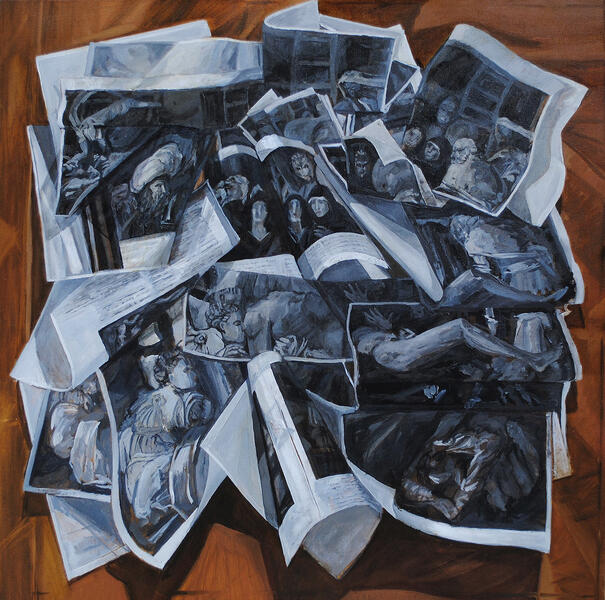 DepostionOil on Canvas 2015 39.5 X 39.5 inches
DepostionOil on Canvas 2015 39.5 X 39.5 inches -
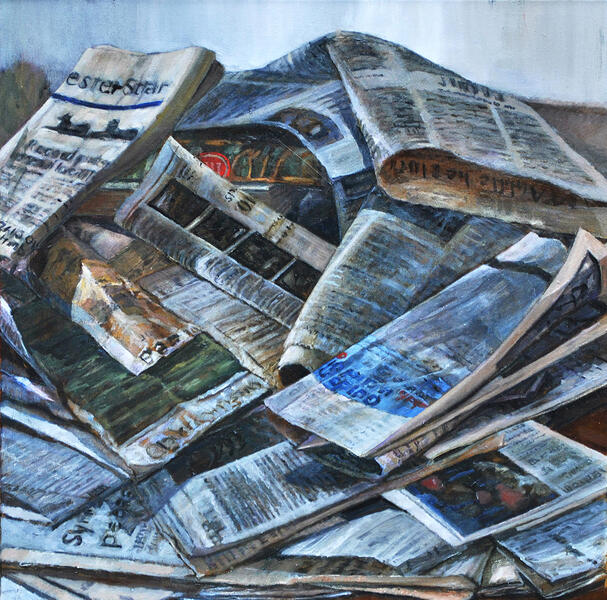 ClippingsOil on Canvas 2015 21 X 21 inches
ClippingsOil on Canvas 2015 21 X 21 inches -
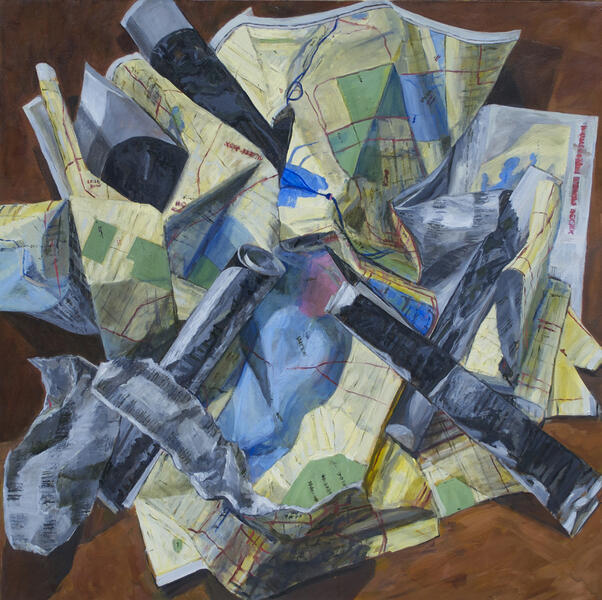 OrientingOil on Canvas 2015 39.5 X 39.5 inches
OrientingOil on Canvas 2015 39.5 X 39.5 inches -
 ShadowsOil on Canvas 2015 38.5 X 37.5 inches
ShadowsOil on Canvas 2015 38.5 X 37.5 inches -
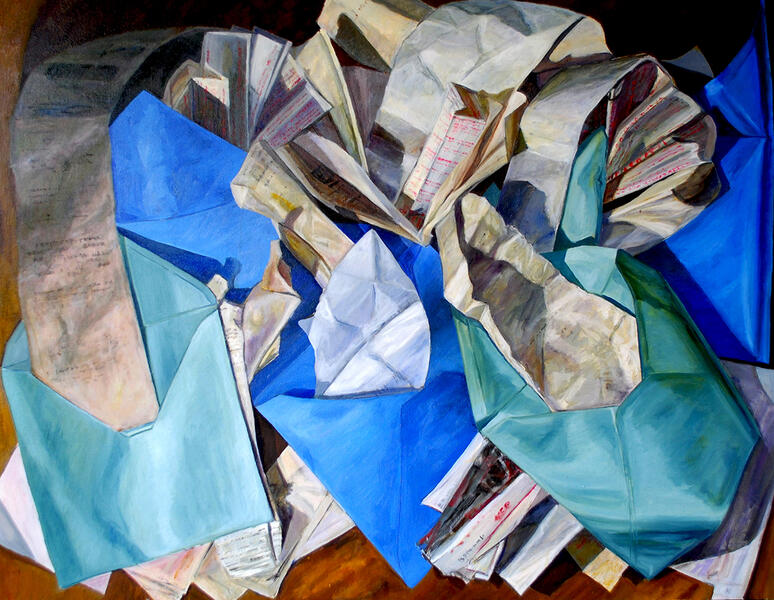 RecieptOil on Canvas 2015 40 X 50 inches
RecieptOil on Canvas 2015 40 X 50 inches -
 Post ItOil on Canvas 2015 33 X 40inches
Post ItOil on Canvas 2015 33 X 40inches -
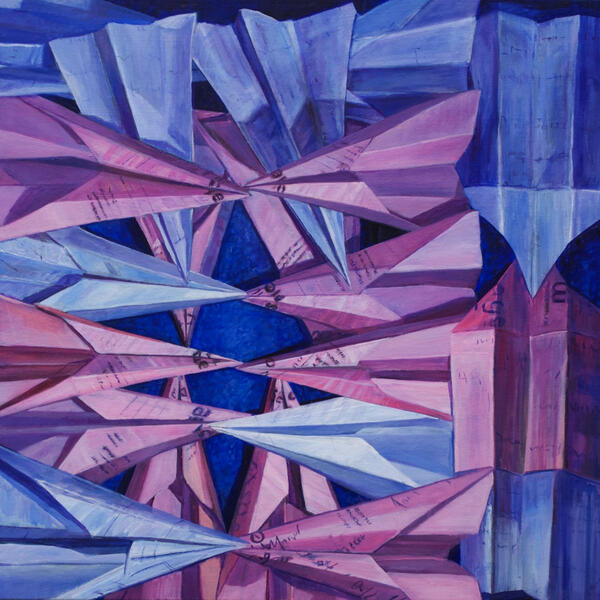 Message Formation 1Oil on Canvas 2016
Message Formation 1Oil on Canvas 2016 -
 Message Formation 2Oil on Canvas 2016
Message Formation 2Oil on Canvas 2016 -
 Memos 1Oil on Canvas 2016
Memos 1Oil on Canvas 2016 -
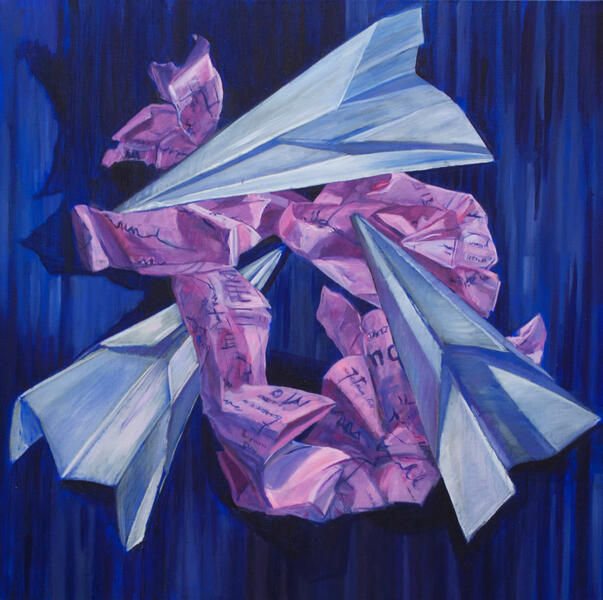 Memos 2Oil on Canvas 2016
Memos 2Oil on Canvas 2016
Lost Horseshoes (2014)
Over the years I have lugged my camera into state parks in the Virginia, Maryland, and West Virginia mountains. For a long time my eyes have searched this green space for early interlopers from abroad coming into contact with a new world. Unfortunately, my mind sees something different than my eyes, and my eyes see something different than the camera. This new work in my series “Lost Horseshoes” is in part an attempt to fill this gap.
This seven paintings in the series Lost Horseshoes, uses a romanticized piece of colonial folklore and history known as “The Knights of The Golden Horseshoe" as a point of departure. In this story the Lieutenant Governor of Virginia, Alexander Spotswood, and around fourteen of his wealthy friends (whom he later is said to have given golden horseshoe stick pins) made a 5 day journey across the Blue Ridge Mountains in 1716. These “early explorers” are said to have drunk many toasts to their king as they claimed new land for him on their journey. Less celebrated are the large number of enslaved individuals that would have supported every step of this gentlemen's expedition or the fact that the land they were "exploring" and simultaneously claiming for the king and gentry was already occupied by American Indians.
-
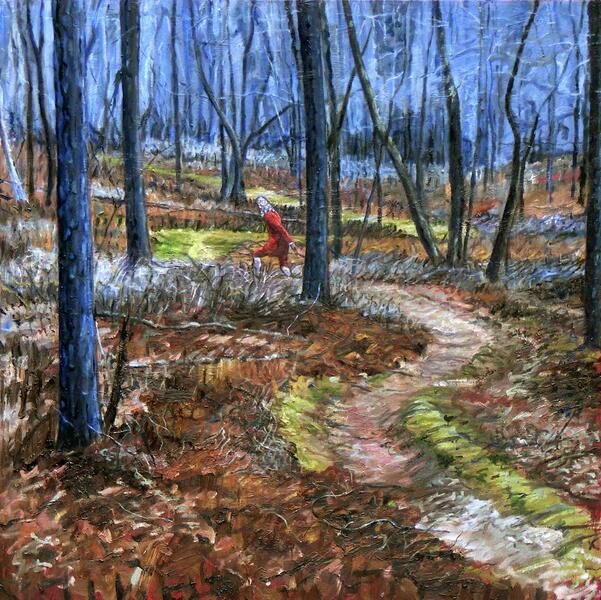 Lost Horseshoes IOil on Canvas 25 X 25 inches
Lost Horseshoes IOil on Canvas 25 X 25 inches -
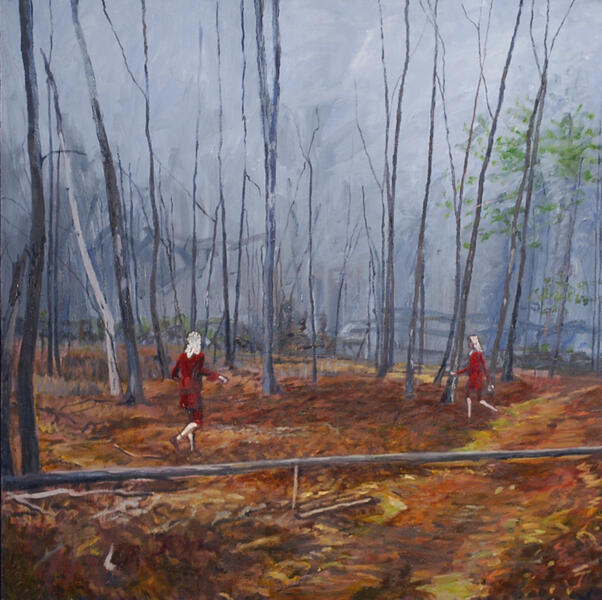 Lost Horseshoes VOil on Canvas 25 X 25 inches
Lost Horseshoes VOil on Canvas 25 X 25 inches -
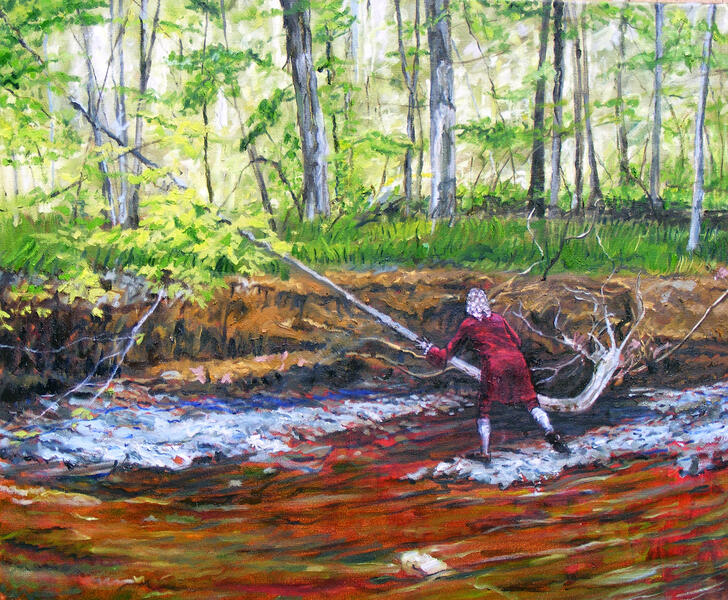 Lost Horseshoes IIOil on Canvas 21.5 X 25 inches
Lost Horseshoes IIOil on Canvas 21.5 X 25 inches -
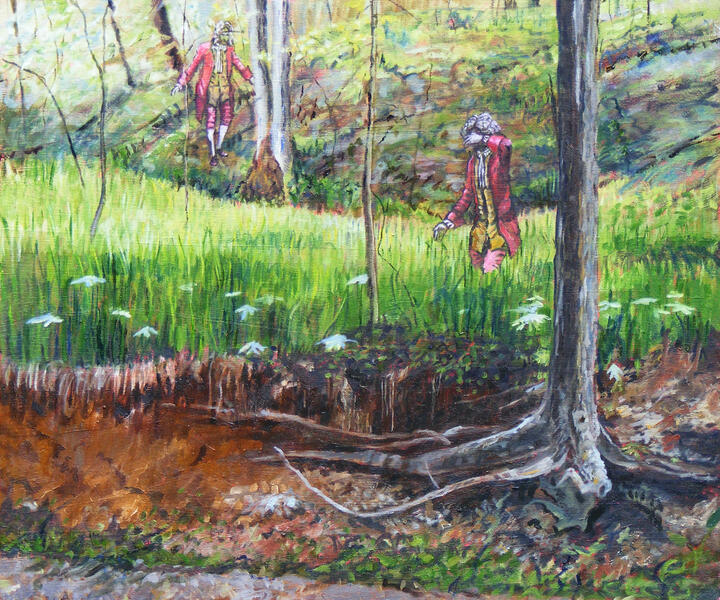 Lost Horseshoes IIIOil on Canvas 21.5 X 25 inches
Lost Horseshoes IIIOil on Canvas 21.5 X 25 inches -
 Lost Horseshoes IVOil on Canvas 30 X 25 inches
Lost Horseshoes IVOil on Canvas 30 X 25 inches -
 Lost Horseshoes VIOil on Canvas 20 X 20 inches
Lost Horseshoes VIOil on Canvas 20 X 20 inches -
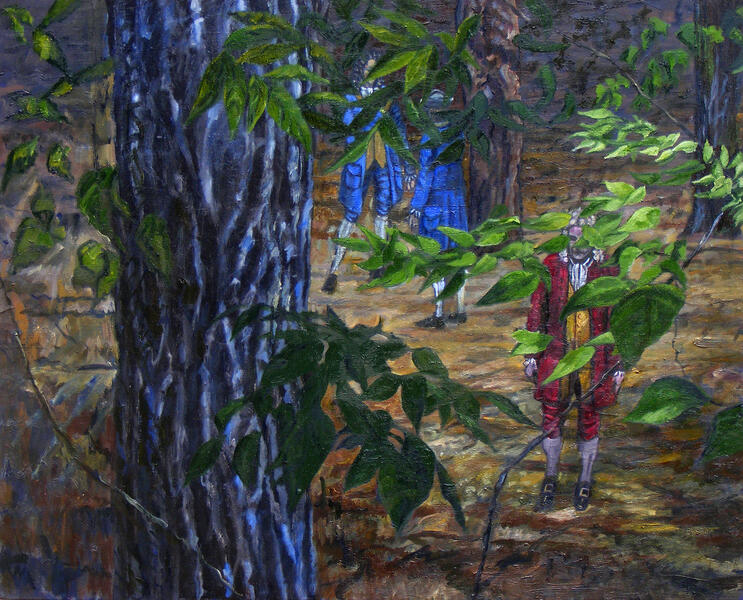 Lost Horseshoes VIIOil on Canvas 25.5 X 31.5 inches
Lost Horseshoes VIIOil on Canvas 25.5 X 31.5 inches
